From Bloomberg: The Real Cost of U.S. Debt Is Nearer the Floor Than the Ceiling
As lawmakers fight over whether to raise the debt ceiling, UMKC associate professor of economics Scott Fullwiler explains how government borrowing costs relate to policy rates. Read the article from Bloomberg. This story also ran on Yahoo Finance.
Oct 04, 2021
Local media cover the name change for Truman Medical Centers
Hospital leadership feel the name change will help patients, community members and others understand the unique partnership University Health has with the University of Missouri-Kansas City. Stories appeared in these news outlets:
Rebranding Truman Med - Flatland
Kansas City’s Truman Medical Center Changes Its Name. Here’s Why, and What It Means (subscription required) - The Kansas City Star
Truman Medical Centers Drops the 'Truman' After 50 Years and Rebrands As University Health - KCUR
Truman Medical Centers Changes Name To University Health - KSHB
Truman Medical Centers Goes All-in On University Health Brand - Kansas City Business Journal
Truman Medical Centers/University Health Announces New Name, Is Now University Health - KCTV5
Truman Medical Centers Changes Name To University Health - Fox4KC
Oct 01, 2021
Local media cover the opening of the Robert W. Plaster Free Enterprise and Research Center
Several media outlets covered the grand opening of the Robert W. Plaster Free Enterprise and Research Center, a $32 million, 57,800-square-foot high-tech research center. Coverage included:
KMBC
KOLR
Fox4KC
Startland News
Oct 01, 2021
Navy grant will help UMKC develop better tools to help students from diverse backgrounds find success
A workforce development program at the University of Missouri-Kansas City, designed to bring more students from diverse backgrounds into science and technology careers, is one of 12 national Science, Technology, Engineering & Mathematics (STEM) Education and Workforce Programs to receive funding from the Office of Naval Research.
The grant will help faculty expand their capacity to provide students from diverse backgrounds meaningful research and workforce experiences in STEM degree programs.
“Equity-Forward Workforce Development Pipeline for Naval STEM Superiority” is led by Daniel H. McIntosh, Ph.D., department chair and professor of Physics and Astronomy in the UMKC College of Arts and Sciences. The $758,000 three-year grant will be used to implement and evaluate a new educational pathway framework to onboard, train and provide undergraduate research experiences to interested sophomore and incoming transfer students in one of four active research areas at UMKC that are aligned with Navy STEM priorities: cybersecurity, unmanned aerial systems, radio frequency simulations, and remote sensing. The Navy funding will support the development of competency-based research skills training courses, provide financial aid for historically underserved students, and offer paid internships for summer research experiences in any of the four research areas.
These pathways will provide STEM-interested students with 15 weeks of data analytics and technical skills training tailored to one of the four Naval STEM areas; faculty-mentored research experiences; internship programming through UMKC Career Services; and exposure to Naval STEM opportunities and careers.
The UMKC team is a partnership of faculty and staff with expertise in a variety of areas including STEM education and research, engineering, computer science, urban education and career services to provide complete workforce preparation. The team includes McIntosh; Travis Fields, Ph.D. associate professor, UMKC School of Computing and Engineering (SCE); Zhu Li, Ph.D., associate professor, UMKC SCE; Farid Nait-Abdelssalam, Ph.D., professor, UMKC SCE; Roy Allen, Ph.D., lead mechanical engineer, UMKC Missouri Institute for Defense and Energy (MIDE); Kaylan Durbhakula, Ph.D., assistant research professor, MIDE; Karin Chang, associate director of the Urban Education Research Center within the UMKC School of Education; Alexis Petri, Ed.D., senior director of faculty support in the UMKC Provost’s Office; Tess Surprenant, interim director of the UMKC Career Center; and Audrey Lester, assistant director of the Undergraduate Research office.
The program is designed to benefit STEM-minded students from all backgrounds by giving them the inclusive experiences, intentional encouragements and skill development necessary to succeed in college and beyond.
“This project focuses on equity to overcome historical barriers for underrepresented and underserved students and utilizes high-impact engagement practices to support the success of all students who are interested in research training and experiences,” McIntosh said.
He believes that university educators must do more than provide students from diverse backgrounds access to opportunities.
“To broaden student success, we must encourage inclusive engagement in their learning and workforce skill development,” he said. “The outcome will not only be vast improvements in equity but a thriving educational system that helps all students achieve their full potential.”
Recruitment for these courses will begin Fall 2021. Coursework will begin Spring 2022.
Sep 30, 2021
Research experiences at UMKC lead mechanical engineering graduate to pursue Ph.D. in bone biomechanics
With the opening of the new Plaster Center, even more students will have the opportunity to engage with leading-edge research. We recently caught up with one School of Computing and Engineering alumnus who knows just how valuable these experiences can be in guiding your career.
Elliott Goff (B.S. ’13, M.S. ’16) spent the first six years of his higher education experience at SCE and now finds himself exploring medical technology research across the Atlantic at ETH Zürich, a research university in Switzerland.
Elliott Goff
Tell us more about what you’re up to in your current position.
I’m a Ph.D. candidate and researcher within the field of bone biomechanics. I investigate bone cell (osteocyte) shapes and relate them to disease (idiopathic osteoporosis). Our collaborators sent us roughly 100 human bone biopsies; I developed a method to prepare, 3D-image and analyze the osteocytes within each biopsy to create a database of roughly 25 million cell geometries. Then I do some big data processing and compare elements between healthy (control) biopsies and diseased biopsies. The ultimate goal of this project is to use cell geometry to classify disease severity.
How did you find yourself exploring this topic?
I won a DAAD Rise Germany fellowship my junior year to spend the summer researching mouse osteocytes in Berlin at the Charité University Hospital. I clearly remember my first day: My supervisor gave me some background reading that turned out to be research studies published by Lynda Bonewald (Ph.D.), a UMKC professor at the time. Between that summer research experience and learning about the UMKC connection, I knew I would pursue the field of bone biomechanics.
How did your undergraduate and graduate research experiences at SCE prepare you for your work now?
During my sophomore year, I joined two UMKC faculty members — Amber Rath-Stern, Ph.D., and Matt Stern, Ph.D. — on a biomedical engineering research project about the mechanical stiffness of tissue scaffolds. This is where I first learned about biomedical engineering and became enamored with the intersection of mechanical engineering and biology. This experience led to subsequent projects at UMKC with Greg King (Ph.D.) in his gait lab and Lynda Bonewald in her osteocyte lab. While earning my master’s at UMKC, Dr. Bonewald introduced me to my current mentor at ETH Zürich. And UMKC’s international academics director, Linna Place (Ph.D.), helped me draft the grant application that provided the funds to send me to Switzerland.
What’s next?
I plan to graduate this year with my Ph.D. and am currently on the hunt for a position in the medical technology field. Research has been my passion for the last decade, and I look forward to bridging the gap between the laboratory and solutions to real-world problems.
Sep 30, 2021
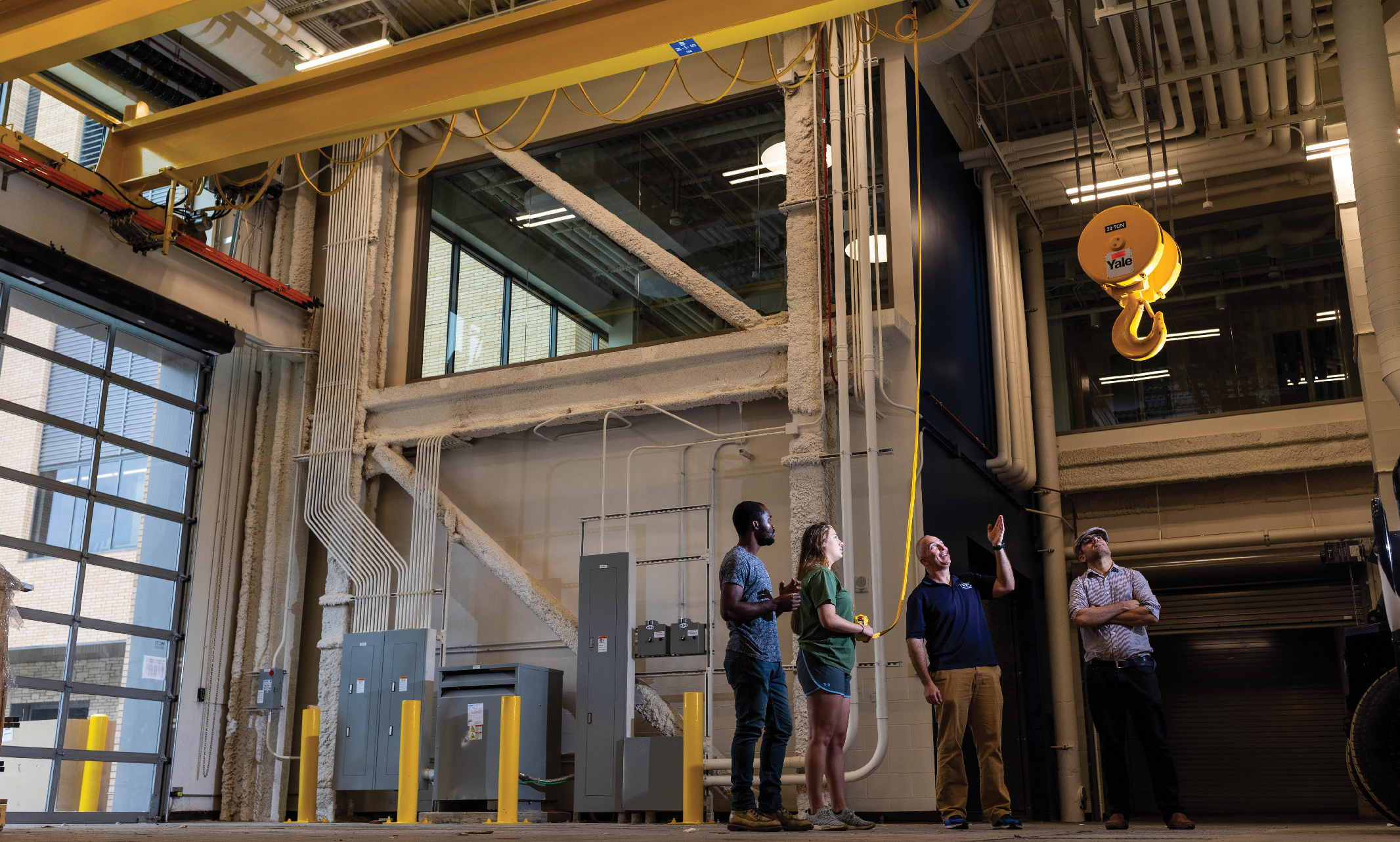
Two-story Structural Lab helps prepare Kansas City’s next generation of civil engineers
There’s no denying Kansas City is a hub for civil engineers.
With international industry leaders such as Burns and McDonnell and Black and Veatch headquartered locally, Kansas City maintains a uniquely high demand for new recruits trained in the field. So even before the plans for the new Plaster Center began to take shape, SCE leadership knew it was critical to provide students with a state-of-the-art structural lab.
Today, the UMKC Structural Lab occupies the west wing of the Robert W. Plaster Free Enterprise and Research Center. This two-story facility is designed to test full-size structural components like highway beams.
“It is always a benefit for structural engineers to see how their designs are constructed in reality,” says John Kevern, Ph.D, chair of the Department of Civil and Mechanical Engineering. “This hands-on experience provides a level of practicality that we haven’t been able to offer before and will improve the quality of all civil engineering students.”
In addition to preparing graduates for competitive jobs here in Kansas City and beyond, the Structural Lab will allow faculty to propose projects using non-traditional materials and analysis techniques because they now have a testbed for validation and verification.
By the numbers:
The two-story crane can support up to 20 tons.
Beams up to 53-feet can be unloaded and tested.
Sep 30, 2021
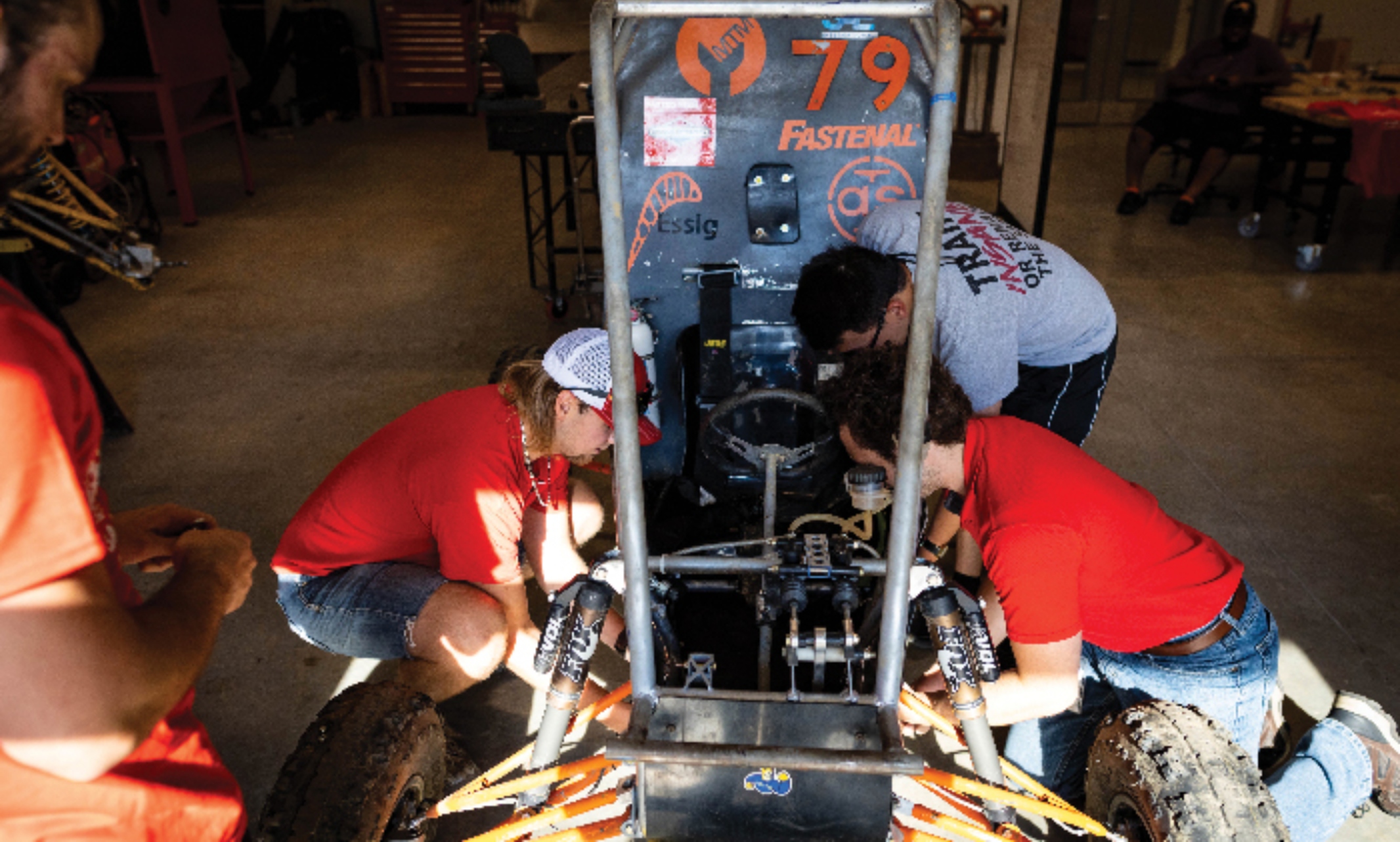
New collaboration area allows for peer-to-peer prototyping and a superior student teams workshop
Engineering is a collaborative process, and at the UMKC School of Computing and Engineering, collaboration is a cornerstone of the student experience.
In fact, in the undergraduate capstone course Senior Design, students are challenged with taking a real-world engineering problem through the entire design process alongside a group of their peers. Thanks to the School’s close proximity to industry, faculty are able to partner with local businesses to actually “hire” these small groups.
For years, students from Senior Design have crouched in empty classrooms or gathered inside their garages to work — until now.
The Robert W. Plaster Free Enterprise and Research Center features a new space on the first floor just for students: the Black & Veatch Student Collaboration Studio. With large workspaces and access to state-of-the-art 3D printers, students will be able to collaborate much more effectively. For the first time ever, they can test their prototypes in a dedicated environment.
“These projects are really the first time the students get to work on a ‘real-world’ engineering problem, just like they will be doing in a few months after graduation,” says Assistant Dean Katherine Bloemker. “They are required to take their ideas from the concept phase through to the detail design phase and, most importantly, to the prototyping and testing phase.”
Classroom requirements aren’t the only thing to draw students to the first floor. Adjacent to the collaboration space is the Burns & McDonnell Student Teams’ Fabrication Shop, another hub for students to work together — designing and building for engineering competitions such as the concrete canoe, big beam challenge and, of course, our signature Baja Racing Team.
According to Baja Racing Vice President and Frame Lead Clayton Morgan, “Having access to this new space really changes the game in terms of our ability to compete.”
The laser jet cutter, paint booth, drill press, horizontal band saw and other tools located in the student space have saved the team both time and money. Where they previously would have sent a frame to be fabricated by an external vendor, now they can manually bend, cut and notch the tubes together — allowing them to really experience bringing their designs to life.
Morgan, who is a junior in the mechanical engineering program, says he chose UMKC in part because the Baja Racing program was highlighted during his campus visit. He “saw the team was pretty prominent in the School and that year ranked 11th out of 116 teams nationwide, a sign that they’re top tier.”
In addition to Baja Racing, Morgan credits UMKC’s close proximity to industry with his choice to study here — both aspects of the school only enhanced by these new collaboration hubs.
Sep 30, 2021
New lab spaces give students hands-on training
As excitement surrounding the opening of the Robert W. Plaster Free Enterprise and Research Center has ramped up, so has excitement surrounding the expanded education and research opportunities it provides.
Among the building’s most eye-catching features is the three-story Motion Capture Lab and Flight Simulation Lab, reflecting the School of Computing and Engineering’s expansion into aerospace engineering.
Through his work with unmanned aircraft technology, Associate Professor Travis Fields noticed that many high-level contracts, grants and research initiatives were leaning toward airspace. He also noticed that students required more hands-on experiences in rigorous, interdisciplinary fields like mechatronics, an intersection of electronic, electrical and mechanical engineering systems.
Together, Fields and Assistant Professor Mujahid Abdulrahim are partnering to charter the Master of Aerospace Engineering program at UMKC.
“The courses Travis pioneered are things we would love our students to know, like system modification and guidance laws for aircraft — classes that address the research needs and lay the foundation for aerospace curriculum,” says Abdulrahim, who’s been flight-testing aircraft for 21 years. “Anytime students are tasked with designing something new or have a specific desire to go into aerospace, we’re teaching the philosophy behind it.”
Whether students need to understand how to develop new things or have a specific desire to go into aerospace engineering, Fields and Abdulrahim agree that aircraft can be a great jumping-off point for other areas of engineering. And while both professors admit their obsession is with with aircraft, students will also learn to integrate cars for those who want to go into automotive testing and performance assessment.
“There is a responsibility on you as an engineer to do good work. It’s not just optimizing the most efficient system possible, it’s also about the holistic design approach that aerospace engineering promotes,” says Abdulrahim.
That’s where the new Flight Simulation Lab comes in. The lab allows students to do complex and relevant tests in safe and accessible ways, teaching them all the things Abdulrahim says he wishes someone would’ve told him when he started out. The new space will help provide the workforce development training students really need.
Sep 30, 2021
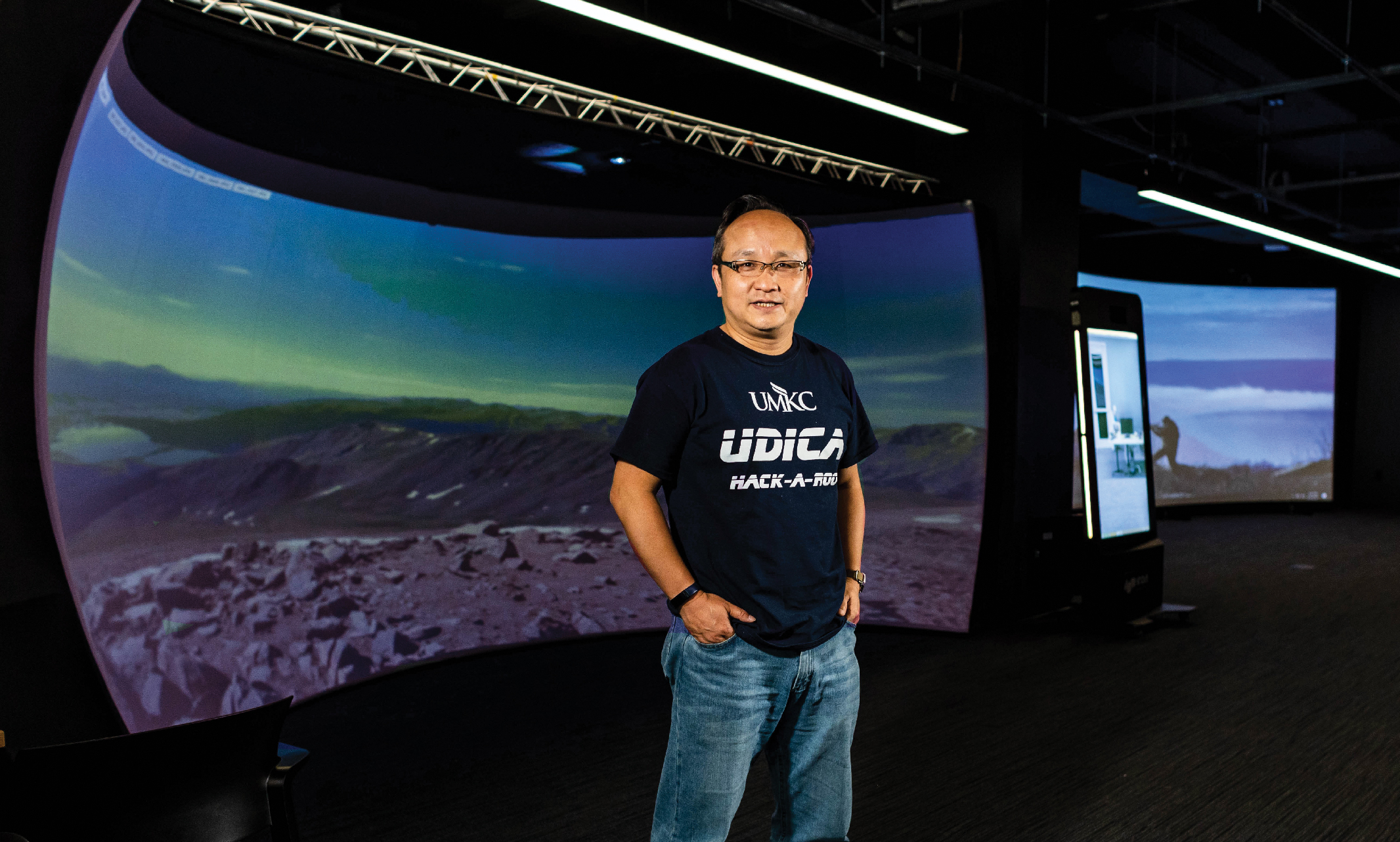
Video game technology reimagined for the real-life battlefield
We’ve all seen the dangers of war, whether it be in the news, movies or in video games where we get to virtually immerse ourselves in simulated military operations. With various combinations of the A and B and X and O buttons, we strategize actions, move in on targets and eliminate opponents.
In our increasingly digital world, one UMKC professor is exploring how to maximize the virtual experience to serve real-life military operations.
Associate Professor Zhu Li, a renowned artificial reality and virtual reality (AVR) research expert, is helping to bring virtual warfare into reality using the new AVR space located in the Robert W. Plaster Free Enterprise and Research Center.
It’s only fitting that as a war history buff – he can identify nearly every WWII aircraft – Li would be working with the United States Department of Defense and the U.S. Air Force to develop a 3D technology to give soldiers a new set of eyes on the battlefield. Using point cloud compression and communication — a way of compressing and transmitting volumetric visual data to present the real world in 3D — soldiers will be able to literally see the enemy from a mile away.
“The idea is to virtualize special forces in warfare because soldiers get air dropped into hostile-raging situations,” Li says. “Normally there’s no way to tell what they’re getting into, but with this new equipment soldiers don’t have to risk their own life. They send an unmanned aerial vehicle, or drone, with 360 cameras and 3D sensors, and the soldier can navigate the cameras and find the target based on information transmitted back.”
To enable this, the drones need 3D sensing, information capture and compressions and communication to present it back to a different device in real time. It’s the same kind of technology used in military[1]themed video games — goggles included — but reconfigured for real-life scenarios.
“It’s like they’ll have virtual eyes and ears in the battlefield. … They can be anywhere on the battlefield and have precise 3D information about the situations, buildings, vehicles, people, everything,” says Li, comparing it to Google Maps’ street view with added 3D elements.
Having a 360-degree view gives soldiers the freedom to navigate the virtual world and be able to walk around and scope out what’s ahead.
“Number one, it’s safer and, two, it’s more effective because human eyes and perceptions are limited. With this new technology, you can see much further and identify you targets much easier. You have more accurate positioning,” Li says.
He’s still doing the algorithm research, so it will be another three to five years before it’s sent off to produce a prototype. But, Li says, the state-of-the-art 3D and AR/VR technology in the Plaster Free Center will enable him to take this research even further.
Sep 30, 2021
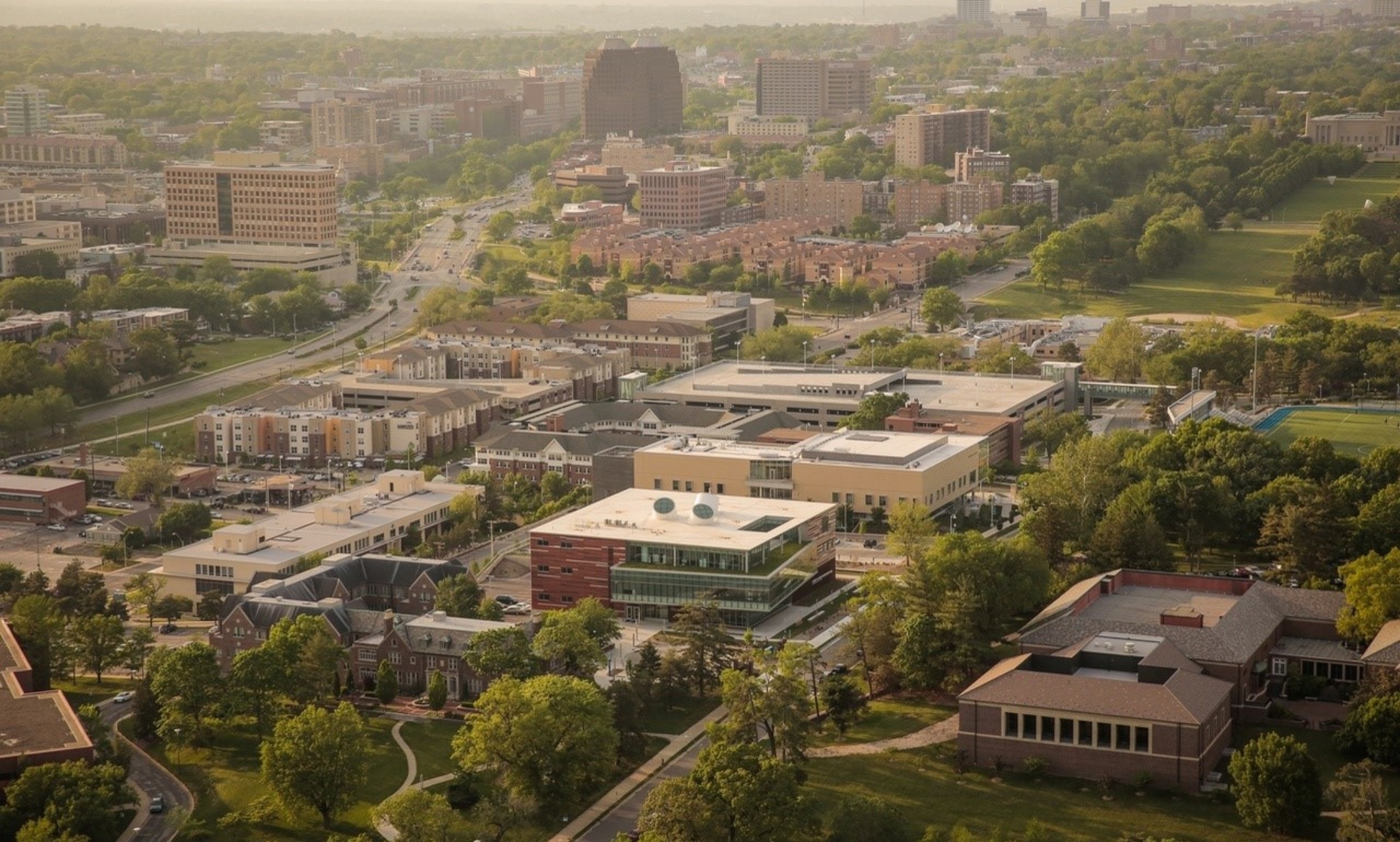
Response to COVID-19 crisis and STEM programming drive innovation, receive support through trustees awards
The University of Missouri-Kansas City Board of Trustees announced the 2021 UMKC Trustees Engagement Awards recognizing community partners and their outstanding support to the university and the community.
This year the Trustee Engagement Awards Committee recognized two recipients for both the Community Partnership Award and the Leo E. Morton Community Service Award as no awards were presented in 2020.
The Community Partnership Award recognizes ongoing and indispensable partnerships that strengthen UMKC. The recipients’ support is essential to the university’s success and is also a critical component in fulfilling the university’s urban-serving mission of education and research that enhances the quality of life in the region. Truman Medical Center and Evergy, Inc. received this year’s awards.
Truman Medical Center (TMC), a longtime, critical partner of the university, took a swift and entrepreneurial approach to community care in response to the COVID-19 outbreak. Programming included mobile testing units that went to churches, community centers and gathering places. TMC provided immediate and ongoing public education in conjunction with neighborhood partners, including the Negro Leagues Museum and the Kansas City Public Library, in both English and Spanish.
“The leadership that Truman Medical Centers and their Community Health Strategies and Innovation team showed community leaders and members during the pandemic through mobile testing and health education were critical in how our communities responded to the pandemic,” says Rev. John Miles, president of the Metropolitan Kansas City Baptist Ministers Union.
Evergy’s support of UMKC is broad and deep, including schools and programs across campus. They have supported the School of Computing and Engineering (SCE) through scholarship funding and a $500,000 pledge for the Evergy Renewable Energy Lab and Roof Deck in the Robert W. Plaster Free Enterprise and Research Center. The company’s support of the KC STEM Alliance, a K-12 STEM initiative housed within SCE, furthers the mission of building the STEM talent pipeline.
“Evergy recruits associates as classroom speakers, mentors, volunteers and judges for a variety of events throughout the year in Kansas City,” Martha McCabe, executive director of KC STEM Alliance, says. “They are committed to reaching a broad range of students and actively recruit a diverse pool of volunteers in efforts to connect with all students.”
The Leo E. Morton Community Service Award recognizes a group or entity within UMKC for outstanding work that embodies the university’s mission as an urban-serving university. The recipients’ contributions ensure UMKC remains embedded in the fabric of the community through innovative services, programs and projects that strengthen and enhance the quality of life in the region and serve the citizens of Kansas City. This year’s awardees are the UMKC School of Law Child and Family Law Program and Cameron Lindsey, PharmD, interim chair of the division of pharmacy practice and administration at the UMKC School of Pharmacy.
The UMKC School of Law Child and Family Law Program spans three decades of innovative services and programs that strengthen the relationship between the university and the community. The Child and Family Services Clinic provides free legal services for parents, relatives and custodians who need help obtaining clear and reliable custody orders for children who have a history of being abused or neglected.
The process of seeking an Order of Protection is time-consuming and challenging, and when COVID shut down courthouses in spring 2020, the problem became more acute. Last year, the school’s Self-Help Clinic worked with the Kansas courts to develop an online portal for those seeking orders protecting them from abuse and stalking. The result is an online protection order portal which is now in place across the state of Kansas.
“While I know this project was but one small part of the many ways in which the Child and Family Law Program provides innovative, justice-driven education and community engagement throughout our region, it is special,” Keven O'Grady, Johnson County Kansas District Court judge, says. “We hope that the portal can be a model for courts across the country.”
Cameron Lindsey, PharmD, interim chair of the division of pharmacy practice and administration at the UMKC School of Pharmacy, is a dedicated community volunteer, securing close to $9 million in donated medications for the Shared Care Free Health Clinic of Jackson County. During the COVID pandemic, Lindsey became authorized to provide vaccines at the university and has been holding weekly clinics, as well as working with other organizations to ensure they have adequate staffing for community events.
“Dr. Lindsey cares deeply for others, the students she mentors and the stewardship of our institution,” Sheri Gormley, chief of staff office of the chancellor. “She fosters a culture of care and service as a leader at the School of Pharmacy and in all she does at UMKC.”
The UMKC Board of Trustees is a non-profit organization established by civic and community leaders to support the University.
Sep 29, 2021
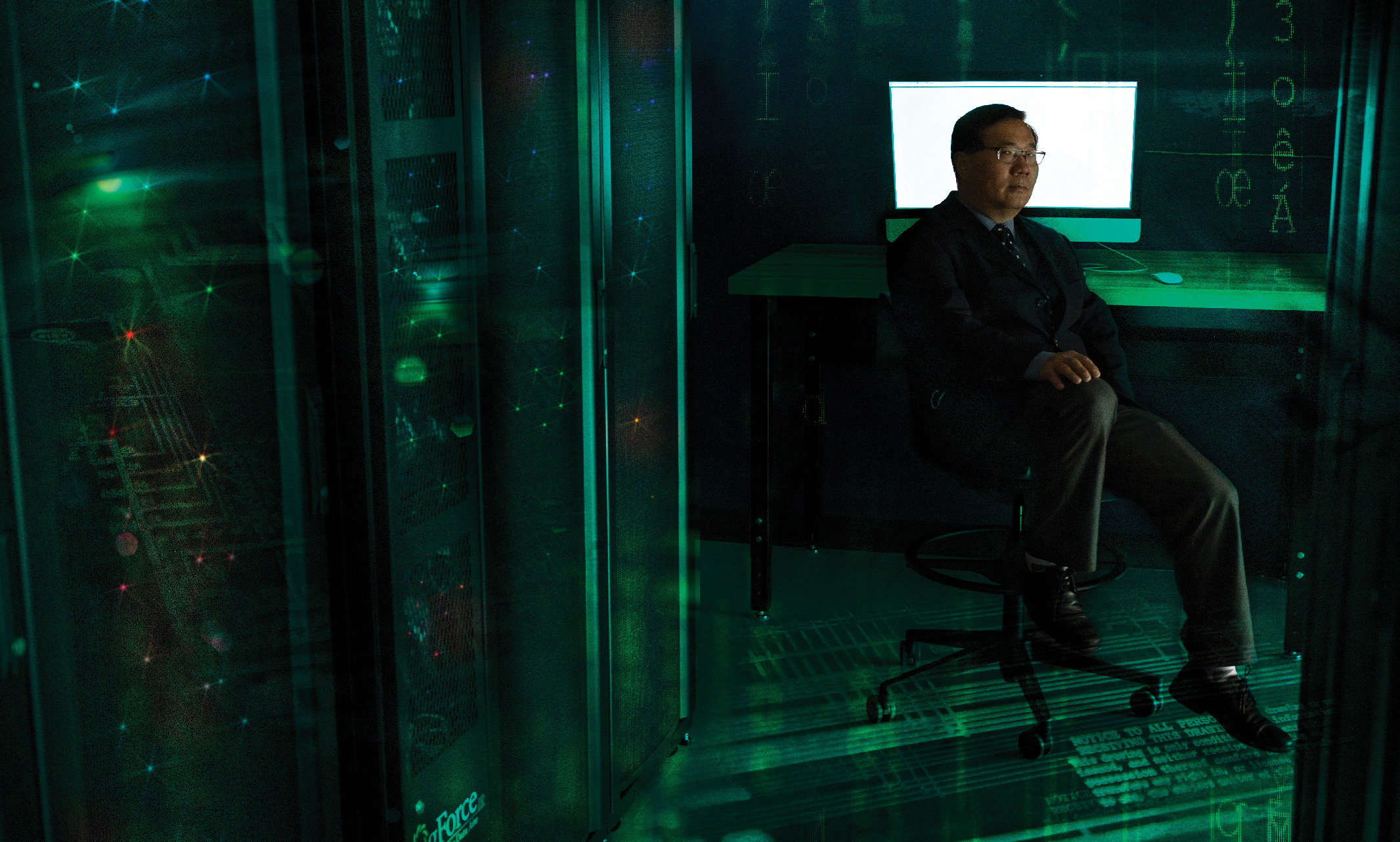
Deep learning research identifies cybersecurity risks
What’s the easiest way for hackers or spies to penetrate a secured computer network?
Have the network managers open the door and invite them in.
Almost all networks purchase basic software from third-party creators. The bad guys have figured out that the third parties present an opportunity for them to penetrate software-supplier systems and hide malware inside the software to be purchased. The software becomes a digital Trojan horse, carrying attackers inside the network’s walls.
That was the strategy behind a huge espionage campaign, first revealed in December 2020, that compromised several major U.S. government agencies, including the Justice Department and the Treasury, as well as private companies including Google and Microsoft. It has been described as one of the largest and most successful digital espionage cases in history.
That’s where Professor Dianxiang Xu comes in. In the SS&C Data Analytics, Cybersecurity and High Performance Computing Facility of the Robert W. Plaster Free Enterprise and Research Center, Xu is using deep learning models, a specialized area of artificial intelligence (AI), to help combat the emerging threat. The goal is to use static code analysis of computer programs to find potential defects and security vulnerabilities. The work is funded by a National Science Foundation grant.
“Software vulnerability is a major source of cybersecurity risks. It is very difficult to identify vulnerabilities in software code as software has significantly increased in both size and complexity,” Xu says.
“Finding software vulnerabilities is analogous to ‘searching for a needle in a haystack.’ Recent advances in deep learning can be promising for predicting software vulnerabilities.”
Spies and hackers aren’t the only bad guys Xu is working to combat. He is also studying ways to use AI to collect and process digital evidence for presentation to juries in court. Xu is basing his network security work on a deep learning model known as The Transformer.
“Finding software vulnerabilities is analogous to ‘searching for a needle in a haystack.’ Recent advances in deep learning can be promising for predicting software vulnerabilities.” - Dianxiang Xu, Ph.D.
“The Transformer is a deep learning model introduced in 2017, used primarily in the field of natural language processing, or NLP,” he says. “It has enabled training on larger datasets than was possible before it was introduced. The pretrained transformer systems such as BERT (Bidirectional Encoder Representations from Transformers) have achieved state-of-the-art performance on a number of NLP tasks.”
“Considering the similarity and difference between natural languages and programming languages, we expect the transformer systems can be pretrained with a large amount of computer code so as to improve various program understanding tasks, such as detection of vulnerabilities in source code.” So, how vital is the anti-spyware research underway by computer scientists such as Xu?
In an article for The New Yorker, Sue Halpern wrote: “The simple truth is that cyber defense is hard, and in a country like the United States, where so much of our critical infrastructure is privately owned, it’s even harder. Every router, every software program, every industrial controller may inadvertently offer a way for malicious actors to enter and compromise a network.”
Inside the Plaster Center, Xu can be found chipping away at those many cyber threats, one model at a time.
Sep 29, 2021
Talking to Maya Angelou’s son about the new award named in her honor
Novelist Whitney Terrell, an associate professor of English at the University of Missouri-Kansas City, oversaw the creation of the award with Phong Nguyen, an English professor and director of creative writing at the University of Missouri-Columbia, and Carrie Coogan, the Kansas City Public Library’s deputy director for public affairs and community engagement. Read more.
Sep 29, 2021
Where to find the best rooftop views in Kansas City
You don’t have to ride Liberty Memorial's antique elevator to get the perspective you crave; many other spots around town offer equally uplifting views, such as the Warko Observatory at UMKC. Read more.
Sep 29, 2021
Des Moines, other cities saw a record homicide surge in 2020, a year marked by protest and COVID
"To be fair and clear, we're going to be unpacking whatever the hell happened in 2020 for the rest of my career, for sure," said Kenneth Novak, a criminal justice expert and professor at the University of Missouri-Kansas City. Read more.
Sep 29, 2021
Kansas City-area fire departments offer incentives to address paramedic shortage
The Kansas City Fire Department has taken a proactive approach to attracting candidates by partnering with UMKC School of Medicine's paramedic and EMT program to bring in new candidates. KCFD is also paying for classes for current employees who go through the program. Read more.
Sep 29, 2021
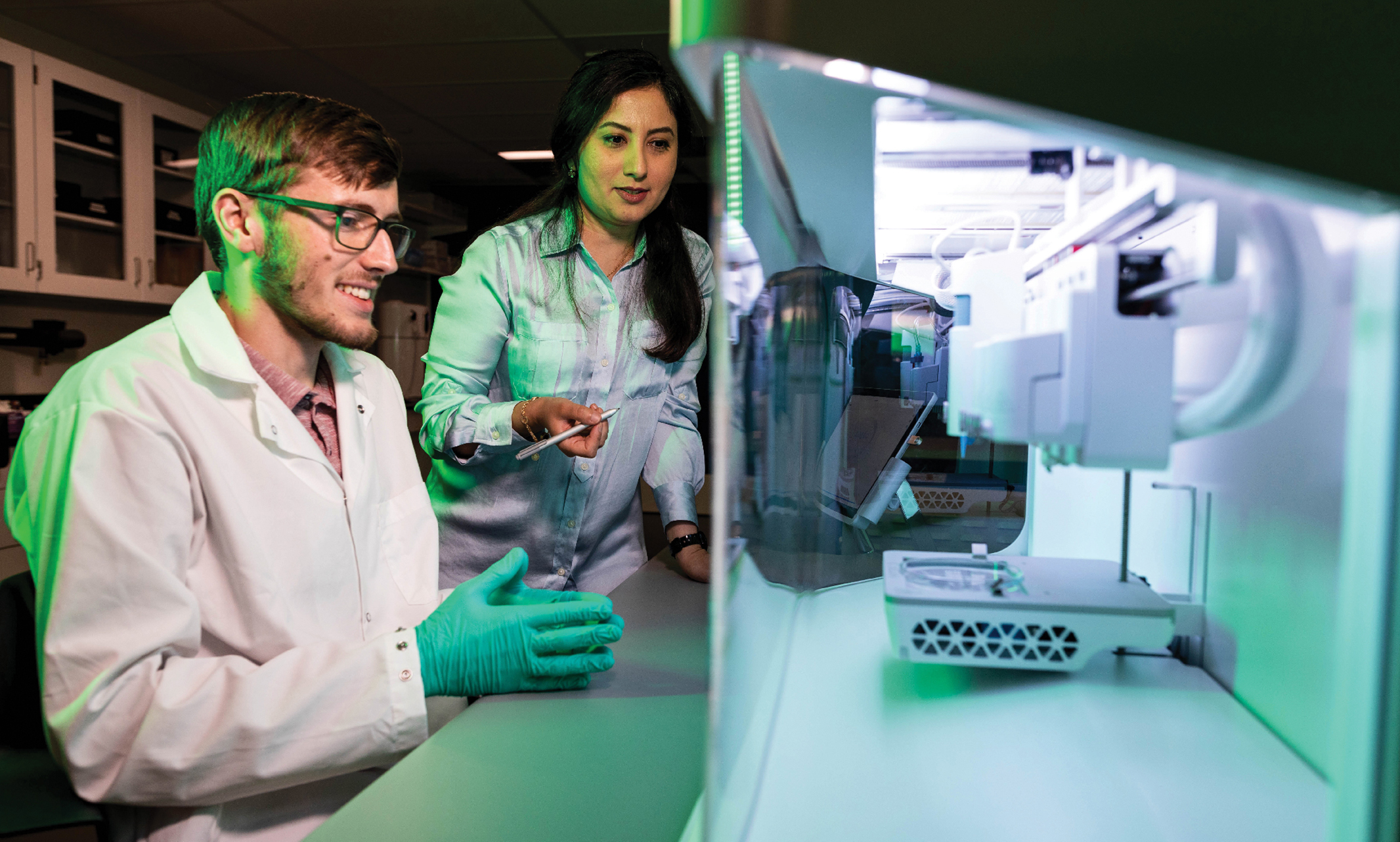
Plaster Center's contamination-free area has specs that get rid of the specks
When working with bio-and nanomaterials, success can hinge on keeping dust and other impurities out of the process. So for Assistant Professor Zahra Niroobakhsh and her colleagues, it was good news that the Robert W. Plaster Free Enterprise and Research Center would include a top-notch clean room.
“In the past I’ve had to use facilities in Lawrence, Kansas, for some work or order materials from elsewhere to start experiments, which can be very expensive,” says Niroobakhsh, an assistant professor in the Department of Civil and Mechanical Engineering. “But now we have the 3D bioprinters … and the Clean Room, to be able to make everything right here.”
APPLICATIONS ACROSS CAMPUS
For Niroobakhsh, “everything” covers a wide range of research interests and applications. She frequently works with other departments and schools, including chemistry, dentistry, medicine and pharmacy.
Clean Room experiments often involve designing and printing soft nanomaterials, which exist in a state between solid and liquid, then studying how they react and interact in different situations. Because the materials can be designed molecule by molecule, Niroobakhsh and her team can produce the tiny building blocks for all sorts of collaborative research and applications.
In petroleum engineering, for example, the aim can be to improve emulsions used in oil spill cleanup, or to enhance the substances used to recover more oil from a well. In pharmaceuticals, experiments can seek more stable and effective ways to deliver drugs or coat a microchip with a material that can detect virus or disease. And in medicine, the building blocks for cells can be tweaked depending on what is being studied.
Our new printer will allow us to inject six different liquids simultaneously and to switch materials during the print. It also has much higher resolution and other capabilities. We’re very excited!” — Zahra Niroobaksh, Ph.D.
Niroobakhsh’s team has worked with Peter Koulen, a professor in the UMKC School of Medicine who has led several groundbreaking research projects at the school’s Vision Research Center.
“Tissues for different parts of the body have different mechanical properties,” Niroobakhsh says. “We can ‘tune’ the biomaterials we are printing so they will produce cells with the properties needed in Dr. Koulen’s work for different parts of the eye.”
As versatile as Niroobakhsh’s work has been already, she’s looking forward to the much more advanced 3D printers available to her in the new Clean Room.
“One of my graduate students built a 3D printer we use,” she says, reflecting the school’s can-do approach. “But our new printer will allow us to inject six different liquids simultaneously and to switch materials during the print. It also has much higher resolution and other capabilities. We’re very excited!”
EMBRACING NEW POSSIBILITIES
Niroobakhsh is used to change and progress. When she joined the faculty in 2018, she brought international experience to the school, having earned her doctorate in materials science and engineering at Penn State, her master’s degree in Germany and her bachelor’s degree in Iran.
She also set right to work establishing her lab, including procuring the right equipment for her work. Niroobakhsh says her rheometer, which measures the flow of most materials, is the only one in the area.
One of her closest collaborators, Stefan Lohfeld, also joined UMKC in 2018 as an assistant professor at the School of Dentistry. They teach the Introduction to Biomaterials course together, using a textbook co-written by UMKC Chancellor C. Mauli Agrawal. They both also utilize bioprinters in their research, and lean on each other for support and perspective. Their printers use different processes, and they often talk about which might be better for a particular task or experiment.
“My printer at SCE uses light to solidify liquid polymers layer by layer to build a device,” Lohfeld says. That Continuous Digital Light Process, or cDLP, “is faster as it manufactures a full layer at a time. This is useful for larger constructs and could be important in mass production. But my printer can’t use multiple materials at once, unlike Dr. Niroobakhsh’s new highend machine.”
Lohfeld has a master’s in production engineering with a focus on materials sciences and his doctorate in materials sciences. He is, essentially, an engineer that works in the School of Dentistry. That works out well, because Sarah Dallas and others at the dental school are leaders in bone-muscle tissue research, and Lohfeld is expert at printing scaffolds on which research cells can grow for tissue engineering.
Lohfeld says the Plaster Center “really gives us access to technologies we haven’t had before, which allows us to expand our research on materials and their processing.”
Besides the research possibilities, Niroobakhsh is eager to have her students see what’s possible from a well-equipped clean room.
“I’m not sure yet how much access there would be for a whole class,” she says. “But the Clean Room’s walls are glass, so we will be able to show students what is being done and explain the processes. … The new facilities will have so many benefits for us.”
Sep 28, 2021
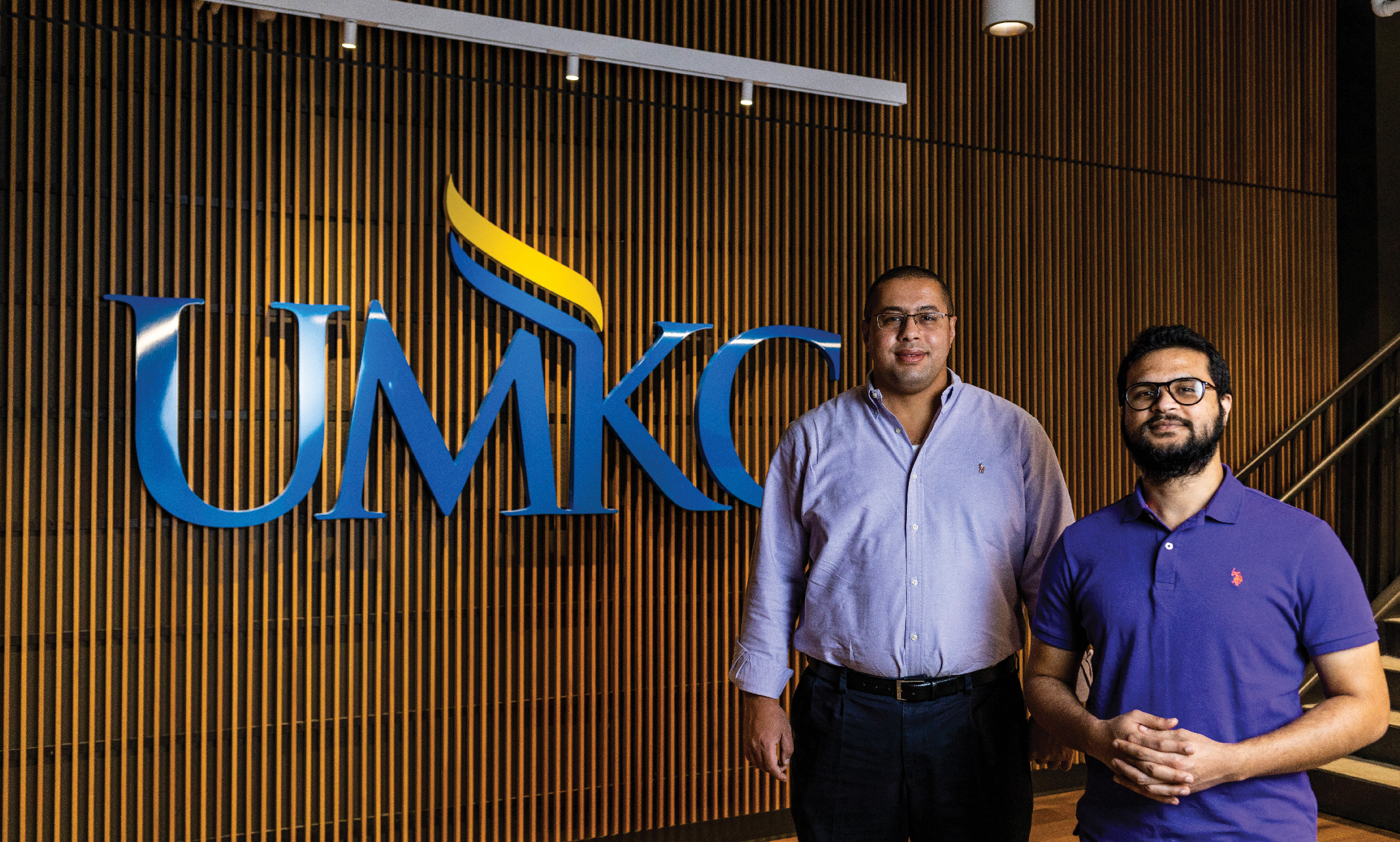
Using high-powered electric pulses to treat cancer in a 3D world
Ahmed Hassan, Ph.D., has long been fascinated by electromagnetics and how electrical impulses can affect the smallest of particles, particularly those with complex shapes. Inside the Advanced Power, Electronics and Electromagnetics Lab at the Robert W. Plaster Free Enterprise and Research Center, the associate professor is focused on how to use high-powered electrical pulses to treat cancer cells.
Scientists have for some time explored the use of electrical pulses to deliver drugs and gene therapies into biological cells. But where most of those studies have looked at cells in a two-dimensional realm, Hassan is taking things a step further.
“At UMKC, we are one of the first groups to study how the three-dimensional shape of actual cells, grown in realistic 3D environments, affects their electrical response,” Hassan says. “It’s only by looking at the full 3D structure that you can predict how the cell will behave when it’s excited by an electrical stimulus.”
Through their research, Hassan and his graduate research assistant Somen Baidya have shown that the outer shape of a cell plays a significant role in how it will react to an electrical stimulus. With help from the National Institute of Standards and Technology (NIST), where their scientists have been able to determine and reconstruct the exact 3D shape of cells, Hassan and Baidya now have thousands of cells shapes to work with, including cancer cells.
Precision to the One-Trillionth Degree
Armed with an array of computers to create computational models and simulations, Hassan is working with multiple computational techniques that can be used to calculate the response of those complex, three-dimensional cancer cells to electrical impulses.
Electroporation is a technique in which an electrical field is applied to a cell in order to increase the permeability of the cell membrane. This allows chemicals such as therapeutic drugs or even DNA to easily be inserted into the cell. The technique offers potential advantages over other therapeutic methods of cancer treatments because of its noninvasiveness and lack of toxicity for noncancerous cells, as well as the possibility of being used in combination with other therapies. The selectivity of the electroporation technique also makes it safer than other techniques that cannot differentiate between healthy and cancerous cells.
"If you want to kill cancer cells, then you apply a strong enough electrical stimulus to break down the cell membrane completely. We’re trying to figure out the optimum pulse that will give us the correct response." — Ahmed Hassan, Ph.D.
Variations in the rate of supraelectroporation used to pierce the cell membrane and penetrate the cell’s internal organelles can guide the selective targeting of desired cells with specific shapes. The current goal, Hassan says, is to determine how to calculate — with a high degree of accuracy and efficiency — the necessary voltage and precise location of these electrical pulses on the cell’s membrane to achieve the desired effect.
Electrical pulses are delivered at very high amplitudes for extremely short durations of time — from nanoseconds, which are one-billionth of a second, to picoseconds, which are one-trillionth of a second. In some instances, the goal is to create a tiny hole in the cell membrane, just large enough to deliver the material inside the cell without harming it.
“If the holes become too large, the cells might die,” Hassan says. “In some cases, that’s desired. If you want to kill cancer cells, then you apply a strong enough electrical stimulus to break down the cell membrane completely. We’re trying to figure out the optimum pulse that will give us the correct response.”
Once the computational techniques are developed, the next step will be to develop a machine learning (ML) platform that uses cell information to predict the precise excitation characteristics necessary to achieve the correct effect on the cell.
Ultimately, Hassan says, the new Plaster Center Power Lab will give him the capability to develop a novel, tunable, high-voltage pulser that can generate the desired electric surge needed as predicted by the ML platform. It will be designed to generate necessary short-time pulses of nanosecond or picosecond duration with high peak amplitude optimized for each cell shape.
From Medicine to the Moon
Once developed, this ML technology could be used to treat other types of cells, for instance, isolating and treating or modifying immune cells. Moreover, different electrical signals can be used to selectively move and isolate specific cells from a collection of cells.
“It’s like applying a magnet to the cell. That will start attracting the cell differently based on its shape,” he says.
Hassan is currently working on the first two aspects of the project to get preliminary data, then working on funding to start building the hardware.
“We’ve been working on this for three years,” he says. “An optimistic timeframe is that we’re halfway there to finishing the engineering aspects before we can take it to the medical researchers and ask them to help us with the actual biological tests.”
A member of the UMKC faculty since 2015, Hassan serves as director of the Multidisciplinary Multiscale Electromagnetics Lab. Before coming to UMKC, he began studying nanostructures with extremely complex shapes as a postdoctoral researcher at NIST. There he developed a large library of computational codes to study their response to electromagnetic stimulus.
“When I came to UMKC, I was using this library of computer codes that I had developed as an electrical engineer to study complex shapes with a wide range of applications,” Hassan says. “One application was to study biological cells with complex shapes.”
Another is looking at the electrical properties of sand and rock particles from the moon. Working with his collaborators at NIST, Hassan was able to obtain the three-dimensional shapes of sand particles obtained during the Apollo 11 mission to the moon.
“We’re trying to calculate the electrical response of those sand particles as another exciting application of using electromagnetic radiation to understand the physics of complex shaped particles,” he says.
Sep 28, 2021
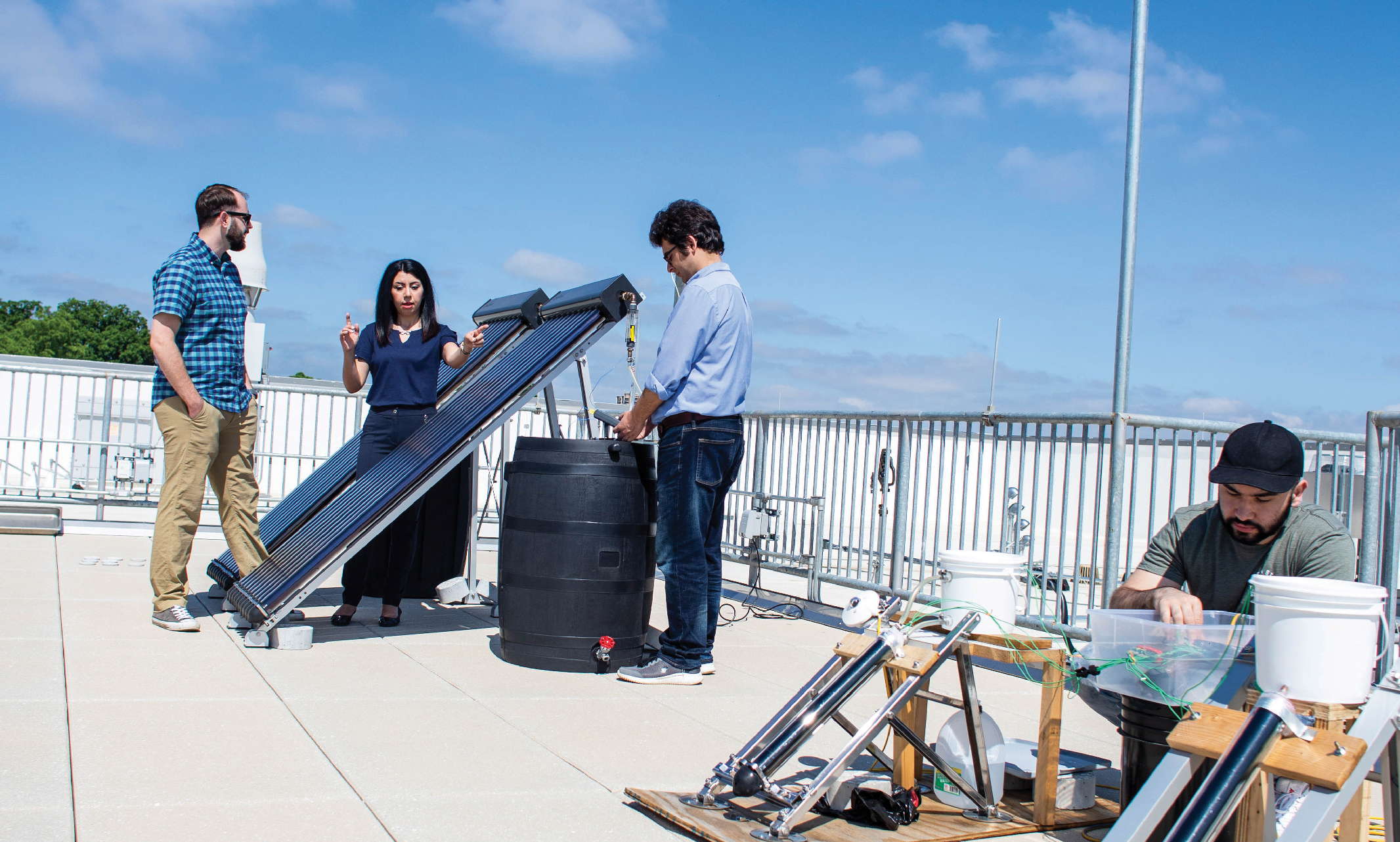
In the Plaster Center, even the roof is optimized for groundbreaking research
Most days, Assistant Professor Sarvenaz Sobhansarbandi, Ph.D., keeps her eyes on the sky.
Sobhansarbandi has spent her career studying solar energy. Her research focuses on a type of solar thermal collector called an evacuated tube collector (ETC). More specifically, she is interested in how this type of collector can make water heating systems more efficient.
The Robert W. Plaster Free Enterprise and Research Center includes two unique spaces for Sobhansarbandi and her students: the Evergy Advanced Renewable/Thermal Energy (ART-E) Lab and the accompanying Evergy Renewable Energy Roof Deck.
Since the completion of the Plaster Center, Sobhansarbandi and her students have spent much of their time on the roof and the lab, working to learn more about ETCs and how we can best utilize them.
How is the Plaster Center enhancing your research with ETCs and solar water heating?
The Evergy Renewable Energy Roof Deck was designed for maximum solar gain exposure. It uses local, easily configurable, leading-edge technology to test both small- and large-scale ETC solar water heating systems. The space will also allow us to get baseline results for Kansas City weather conditions and optimize the system’s functionality to achieve higher efficiency.
A low-voltage conduit connects the roof to the lab below, allowing us to monitor the system and data connection devices. Outside of the Renewable Energy Research Lab, the new 3D printing lab and Innovation Studio will allow us to fabricate prototypes in-house and move them straight upstairs for testing.
Are you working with any new technologies in your new spaces?
The 5,000-square-foot roof deck gives us plenty of space for a new full-scale solar water heating system. In the future, we plan to integrate photovoltaic arrays and a weather station to track comprehensive, real-time conditions. Currently, we are able to monitor solar radiation intensity using Pyranometers on the roof, connected directly to the lab space.
How have your students responded to the new research lab?
My graduate and undergraduate students are very excited as the new lab gives them the opportunity to perform research in an even more well-equipped environment. Here are some of their individual reactions:
“Moving into this new lab is great as we now have a more sophisticated facility to do hands-on experimental research.”
“It’s wonderful to have more space to work on our research and collaborate comfortably.”
“The new lab is equipped with high-tech devices and a big glass window, which makes it a more visually and thermally comfortable place to monitor the technology.”
“The new facilities have given me the opportunity to pursue my research in avenues that I previously thought were impossible.”
Does the new space enhance your teaching?
Absolutely! My mechanical engineering students get to see some real-world applications of heat transfer in action in our solar water heating system setup, as well as all of the instrumentation used to monitor the equipment and collect data for our research.
My colleagues are also able to show examples of material analysis using the Thermogravimetric Analyzer and Differential Scanning Calorimeter in our lab. On top of all that, it’s a great excuse to take students outside for fresh air and sunshine to look at cool technology and the view of downtown KC!
How does your new lab compare to those of schools across the country?
Having 1,000-square-feet of interior space and direct access to the roof deck is a distinct feature. The dedicated space to perform field testing gives us the potential to cross-validate our simulation modeling results without the need for travel to other available research sites. In addition, the high-end video conferencing technology has been a huge benefit when collaborating with other researchers and staying connected.
What is the next step in your research?
Next steps include experimental investigation of modified large scale ETCs by applying preliminary findings from small scale analysis with the goal of efficiency enhancement. Additionally, development of control systems to automate and optimize the system functionality are being studied.
Sep 28, 2021
Startland News reports on the opening of the Robert W. Plaster Free Enterprise and Research Center
“We have never had a facility like this — with the diversity of equipment and the availability to get involved,” said Christina Davis, director of the studio for the School of Computing and Engineering at the University of Missouri-Kansas City. “Anyone walking through the building can see exactly what research is being done. And to invite students to participate and collaborate, that is what makes this building special.” Read more.
Sep 28, 2021
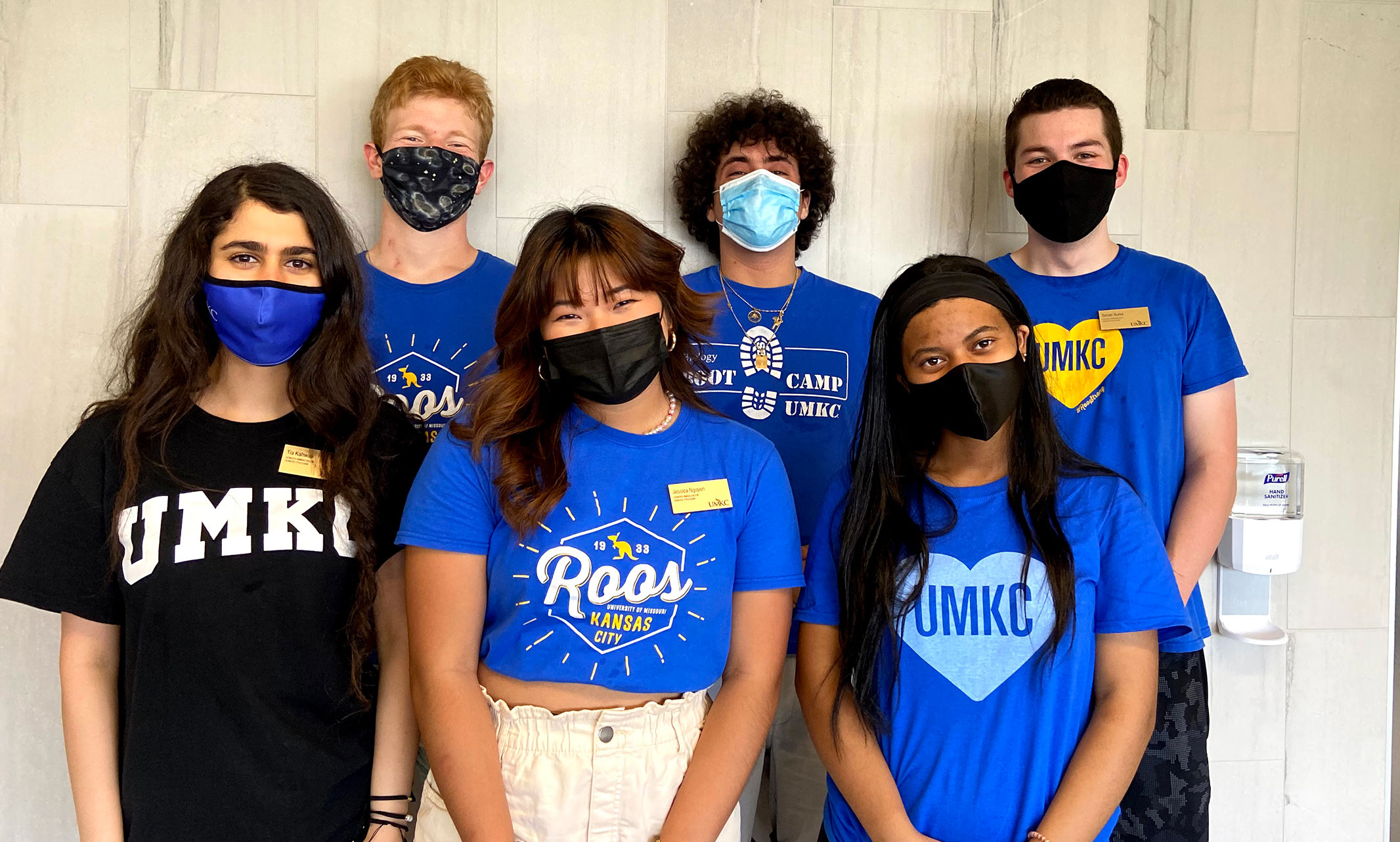
Students combine academic rigor with community service
A record number of new students across disciplines have committed themselves to academic excellence, while also serving their communities, by enrolling in the UMKC Honors Program.
This year, 471 students are enrolled in the prestigious Honors Program. The program, formerly known as the Honors College, provides a multitude of services to our campus community.
“The Honors Program invites and includes new and continuing students from all programs and all disciplines across the university,” said Henrietta Wood, Ph.D., one of two full-time Honors Program faculty. “We offer honors versions of general education courses, and we supply a number of courses to help students accrue the credits they need to graduate with honors.”
Gayle Levy, Ph.D., is the Director of the Honors Program. She serves as an advisor to students, especially when they are writing their Senior Honors Thesis. She also works with faculty on how to get involved with the Honors Program or, more specifically, if they are interested in teaching an honors class. Stephen Christ is the other full-time faculty member, teaching innovative and engaging courses. He’s also actively engaged in mentorship of honors program students on an individual level and organizationally as the faculty advisor to the Honors Student Association.
The program also offers the Roo Honors Academy for local high school students, as well as the Roos@Noon Speaker Series presentations that anyone in the university community can attend. It’s that wide university impact that inspired Sean Purdue, a senior honors student in civil engineering, to become an Honors Ambassador.
“That's what I really like about the Honors Program,” Purdue said. “I love civil engineering, but I don't want just civil engineering friends. I want friends from all the different majors, and that’s been a huge benefit of the program.”
These benefits extend well past a student’s college career into their professional careers. Alaina Shine, ‘15, brought the skills she learned into her career as a pediatric resident physician in Seattle.
“Often in the hospital I am challenged with problems where there is no ‘right’ answer,” Shine said. “A large portion of my job as a physician is teaching patients and their families about their medical illnesses and conditions. I lean upon skills I began learning as an Honors Program student to incorporate ideas from my multidisciplinary team to develop a solution for our patients and their families.”
This interdisciplinary approach does not stop with the students or alumni. Jess Magaña, Ph.D., a professor in the School of Biological and Chemical Sciences, serves as a faculty mentor for honors students.
“One of the very best parts of teaching is getting to know the students, getting to know their specific journeys and helping them take that next step,” Magaña said. “Being an Honors Program mentor is a really great way to do that, and it's especially good for getting to know students who are not in your school.”
Faculty mentors assist students through a variety of informal meetings to check up on the students’ progress, academic and otherwise. If you are interested in becoming a faculty mentor, reach out to Margo Gamache, Director of Student Services for the Honors Program at gamachem@umkc.edu.
“We're not just academic people,” Purdue said. “We still like having social events and friends, and it can be hard to balance. I think most faculty have had that same experience. Having someone to help us navigate that is so beneficial.”
That benefit spreads to the university as a whole. Many Honors students are highly motivated, and they balance academic excellence with serving both UMKC and the wider Kansas City community. Most of the Student Government officers are honors students.
Honors students volunteer to lead clubs for youngsters at the Kauffman School and have communicated with residents of a senior living facility. In the Honors Social Action class, students have promoted campus recycling, mental health awareness, and recognition of commuter students.
“I'm constantly impressed with how involved Honors Program students are and how much they're willing to do to affect their own lives and the lives of other students at UMKC,” Magaña said. “They're super involved, and they're all just such great people to get to know.”
Sep 27, 2021
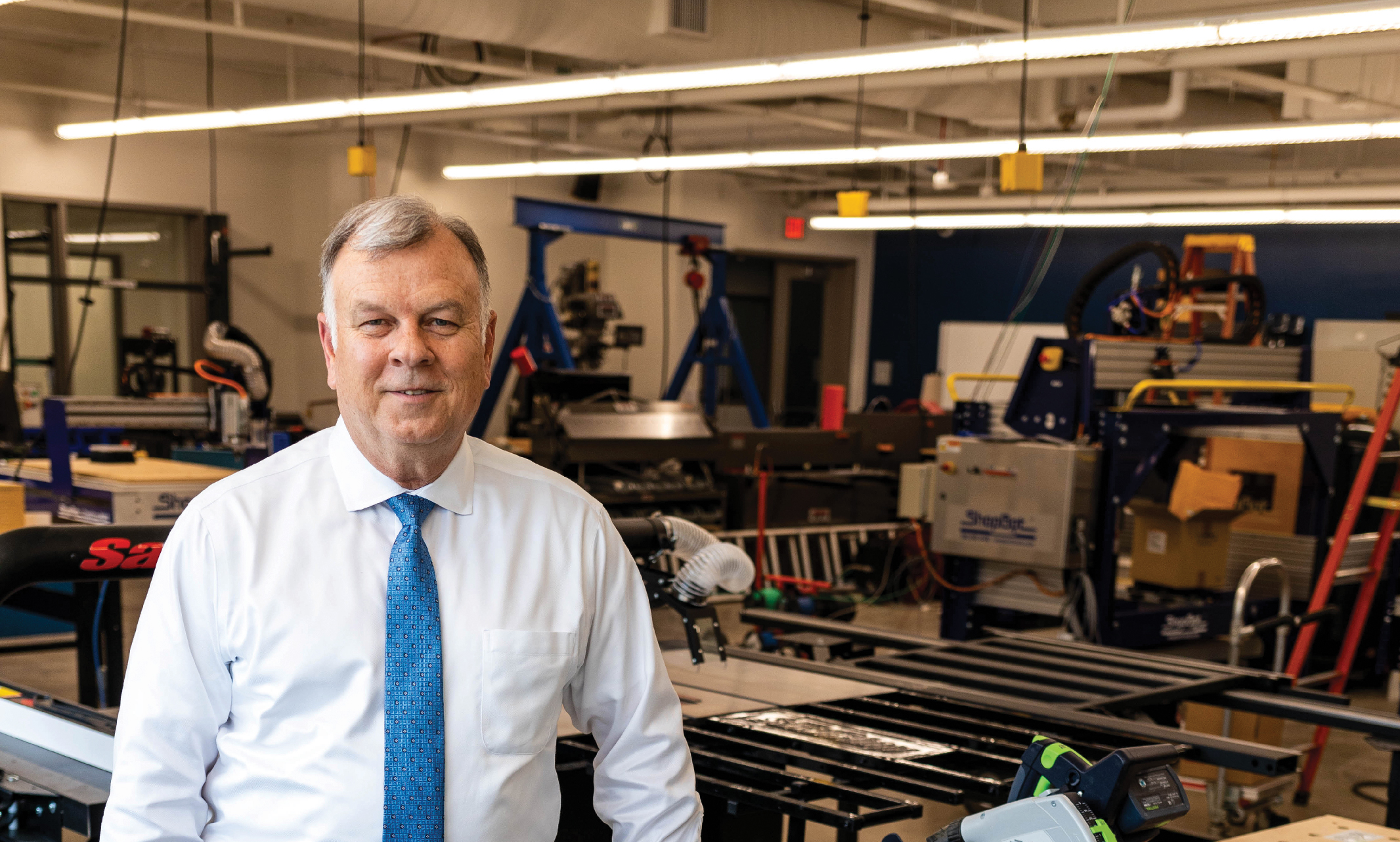
New innovation studio brings together UMKC and the community
Dean Kevin Truman has vision.
As he walks through the halls and labs of the UMKC Innovation Studio in the Robert W. Plaster Free Enterprise and Research Center, he sees progress, growth and untold opportunity.
“This is a place for entrepreneurs to come, collide and create,” he says. “It’s digital to physical.”
While the machines are quiet and the few students in the building work independently and masked, Truman’s eyes are alight with the certain creation of new products, new processes and new collaborations that will not only build UMKC and the school, but also the community.
“We hope to see art students from the Kansas City Art Institute, K-12 students interested in science, technology, engineering and math, or enthusiasts of the virtual reality world.”
While providing some familiar components, the Innovation Studio is different than traditional makers’ spaces. For example, the space provides access to new technologies for rapid prototyping using the 3D printing lab.
“The makers’ spaces in town do a great job serving their market, but we are focused on entrepreneurship,” Truman says. “We can provide services to companies, researchers and the community. It may be someone building one model, but if they need to make 20 prototypes to make sure they’ve gotten it right, we can also accommodate that.”
The Ewing Marion Kauffman Foundation is a major partner and funder in the Innovation Studio. They consider the programs and spaces for students, faculty, staff and the community as critical to the regional entrepreneurial ecosystem.
“Our grant to UMKC helps build on the university’s strong foundation of student and community-facing entrepreneurship support programs,” says Melissa Roberts Chapman, senior program officer at the Kauffman Foundation. “That includes the Innovation Studio. We are excited to work together to see how entrepreneurship can help remake our regional economy to become more equitable, more vibrant and more innovative.”
Students will also have the opportunity to take advantage of the labs in the Innovation Studio and will be able to work at cost. In order to maintain state-of-the-art capabilities, community members will be charged reasonable fees. The center will maintain a staff for assistance, training and maintenance, and there will be a shop manager to help with 3D printing.
“Our 3D printing facility is one of the top five in the country,” Truman says. “Someone could send a graphics package here and a technician can use the company’s files to create what they need. The machine can create product composed of metals including titanium, machine grade steel or copper. We’d track the materials used, pack and ship it to them. It couldn’t be easier.”
The Augmented and Virtual Reality (AVR) lab will have the very latest technology. Professionals and enthusiasts can use the AVR Training Lab to experience the newest augmented and virtual reality technology. The AVR Showroom can accommodate meetings, product development and training. Visitors, whether they are enthusiasts or professionals, can experience the latest virtual reality technology as well as learn the latest 3D design and development software.
“We will be a hub of information,” Truman says. “We have relationships with others and are excited to share resources. We are not an island. We are here to create community.”
Sep 27, 2021
Kansas City-area schools face racist incidents as critical race theory debate continues
Antonio Byrd, an English professor at UMKC who studies Black literacy, described critical race theory as a way to illuminate the role of racism in a society that doesn’t tend to think racism is a major problem. By considering the impact of racism, Byrd said, steps can be taken to fix it. Read more. (subscription required)
Sep 27, 2021
The Oklahoman reports on scholarship awardees
The Heritage Hall Alumni Association recently recognized Genesis Franks as its 2021 Alumni Scholarship recipient. Franks, a 2020 graduate of Heritage Hall, is a sophomore at the University of Missouri–Kansas City. Read more.
Sep 27, 2021
Olympic medalist Courtney Frerichs has no doubt
This is a story about Courtney Frerichs, who turned in one of the surprise performances of the Tokyo Olympics. But really it is a story about mantras, because who Frerichs is and what she managed to accomplish this summer are all about the words she has been repeating to herself for years. She attended the University of Missouri-Kansas City. Read more. (subscription may be required)
Sep 26, 2021
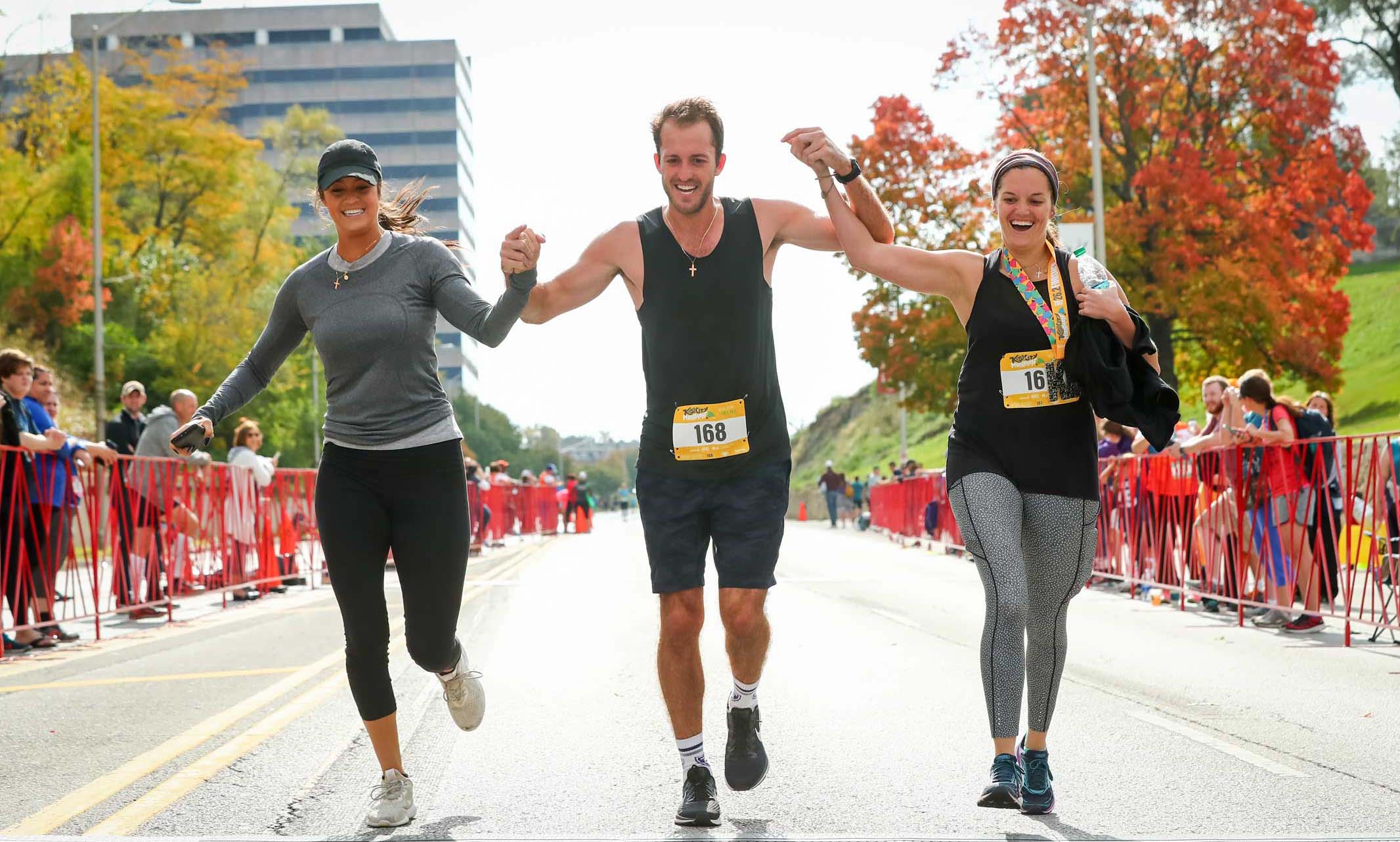
Registration is now open for KC's largest racing event
UMKC and the School of Medicine are proud sponsors of the Oct. 16 Garmin KC Marathon – the largest race event in Kansas City and a significant community tradition. This year’s race has something for everyone: a full- and half-marathon, as well as a 10k and 5k, plus many volunteer opportunities.
Sep 23, 2021

Features 11 state-of-the-art research labs
The University of Missouri-Kansas City unveiled its new $32 million high-tech research center to hundreds of guests on Oct. 1.
The five-story, 57,800 square-foot Robert W. Plaster Free Enterprise and Research Center features 11 state-of-the-art research labs. It is the largest privately-funded capital project in UMKC history, with more than 25 donors.
"The Plaster Center has all but ensured that UMKC will remain the #1 ranked school for computing and engineering in Kansas City for years to come," said Kevin Truman, Dean of the UMKC School of Computing and Engineering, which will oversee the multi-purpose facility.
The labs within the Plaster Center contain a 3D printing lab and fabrication studio to build prototypes, high-performance computing and analytics equipment and software, an FAA-approved flight simulator, a two-story drone flight-testing bay and $3 million of augmented and virtual reality equipment.
A group of guests receives a tour of the Innovation Studio inside the Plaster Center. Photo by Brandon Parigo
The labs aren't just for UMKC faculty and students — the facility is also a community hub where people from across the university, city and region can come together to discuss, design, build and innovate while propelling economic activity in the region through free enterprise.
"This center will be open to all of ours students. In addition to the students at the School of Computing and Engineering, who make their home here, students of entrepreneurship at the Henry W. Bloch School of Management will be able to build custom prototypes in conjunction with our engineering students," UMKC Chancellor C. Mauli Agrawal said. "The Plaster Center is a resource for our community. From independent makers to entrepreneurs and innovators, our lab spaces are available for them to experiment and explore new technology, new innovations in materials and breakthroughs in application and design."
Some of the technology within the labs is not available anywhere else in Kansas City, allowing UMKC to remain state of the art in research and education while helping community partners do the same.
"We are excited to play a part in the cutting-edge research and prototyping at UMKC and in Kansas City," Truman said.
The Plaster Center, on the corner of Rockhill Road and East 51st Street, is named after Robert W. Plaster, founder of Empire Gas Corporation, which was one of the nation's largest retail LP gas distributors.
"This accomplishment would not be possible without the support of the Robert W. Plaster Foundation," Truman said.
Dean Kevin Truman and Stephen Plaster, Chairman and President of the Robert W. Plaster Foundation. Photo by Brandon Parigo
A Missourian, Plaster started Empire Gas in Lebanon, Missouri and sold the business in 1996. He then went on to found Evergreen Investments, LLC, an investment company that owns several businesses. The Robert W. Plaster Foundation, a major donor to the center, is also located in Lebanon.
"The Plaster Foundation is thrilled to have contributed to the new Robert W. Plaster Free Enterprise and Research Center at UMKC," said Jason Hannasch, Associated Executive Director of the Plaster Foundation. "The Plaster Center labs house advancements in computing and engineering technology that will help students, faculty and community members completed advanced research in their chosen field."
Take a virtual tour of the Plaster Center
Sep 23, 2021
Dancing Into A New Era: Local Company Marks 30 Years of the Best Contemporary American Choreography
Most of Wylliams/Henry’s dancers are UMKC Conservatory-trained, which means they have worked directly with dancers, teachers and choreographers who have served as key figures in both the company and the Conservatory. Some of the individuals include Mary Pat Henry, who formed the company a generation ago with the late dancer-choreographer Leni Wylliams when both were on the UMKC Conservatory faculty; DeeAnna Hiett, co-artistic director and UMKC Conservatory dance division chair; Paula Weber, former company member and retired UMKC dance professor; and Caroline Dahm, executive assistant and UMKC Conservatory faculty member. Read more.
Sep 23, 2021
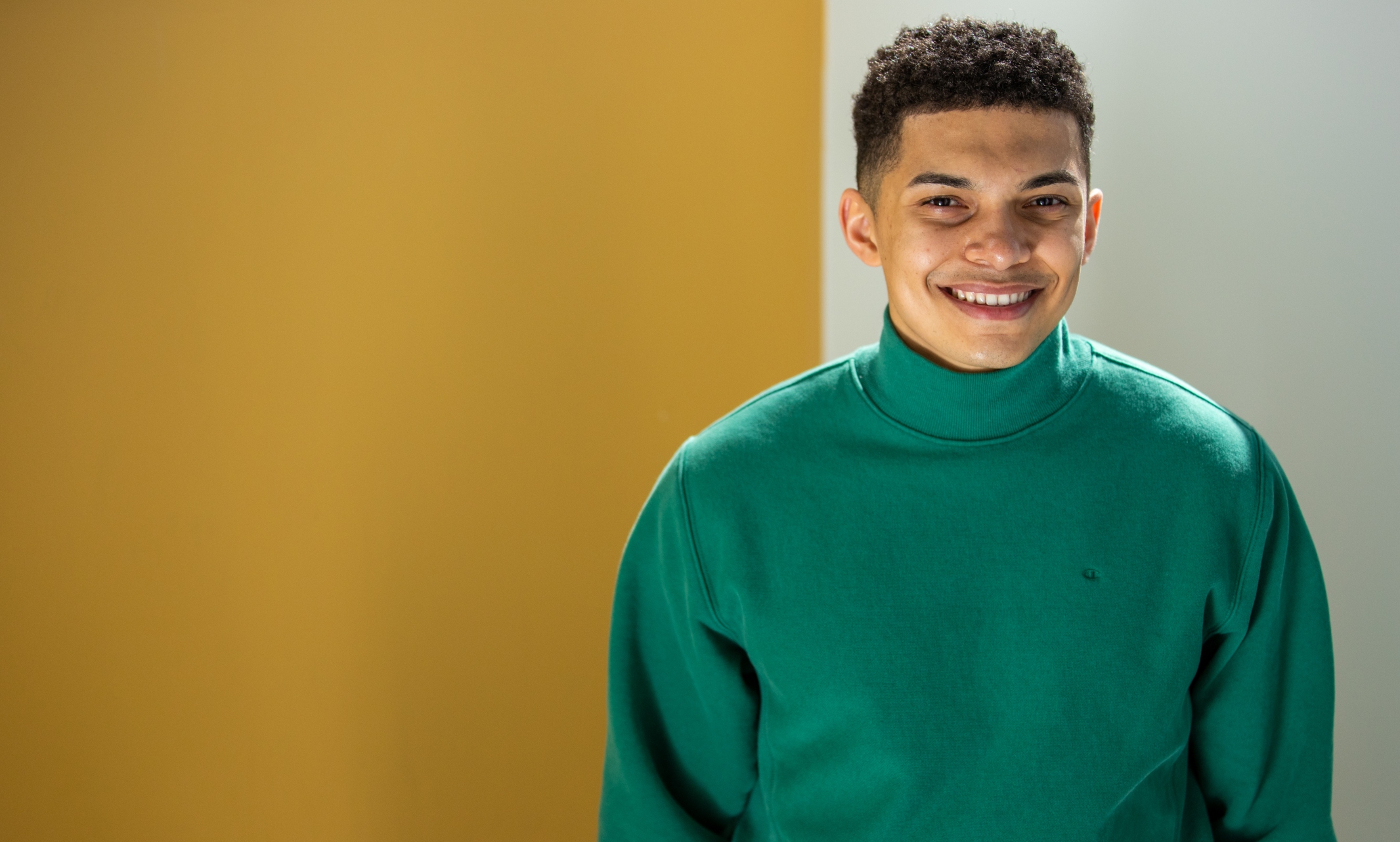
Brandon Henderson stepped back from opportunity with positive results
Brandon Henderson stepped away from his role as UMKC Student Government Association president to focus on his mental health in 2020. Nearly a year later, he thinks it was the best decision.
In hindsight, does stepping away from SGA seem like the right decision?
I am very glad that I stepped down as SGA president, and I have absolutely no regrets doing so. It gave me the space I needed to get healthier and get my academics back on track. I am 100% certain that I wouldn't have made the Dean's List last semester if I hadn't stepped down.
Have the lessons you learned during that challenging time stuck with you?
I learned last year that I'm not Superman, and I have to prioritize taking care of myself if I want to help others, too. Now that I've gotten healthier, I'm getting more involved in my community again. But in the back of my mind, I know that I must be very intentional about how much time I allocate to my extracurricular activities.
What coping mechanisms did you adopt last year that are still helping?
Something I learned last year was the importance of keeping an accurate calendar. Not only does it help me remember things, but I can visually see where I'm budgeting my time to things other than myself. That helps me avoid overextending myself.
If someone were feeling overwhelmed, what resources would you recommend to them?
I highly recommend scheduling a visit with UMKC's Counseling Services. Even if you think you don't need it, or that it won't work for you, if you're feeling any signs of burnout just try to visit with a counselor at least twice.
Often people don't want to talk about personal issues with their friends, but everyone needs someone to vent to. If you don't have that someone, then I highly recommend you go visit Counseling Services and find that someone!
You’re finishing up your degree this semester. How does that feel?
It feels equal parts exciting and nerve-wracking, but nevertheless I am ready to cross the finish line. I've been a college student for the last four years, so it will be quite an adjustment to transition out of that. I'm looking forward to seeing what this new phase of my life has in store for me.
Sep 22, 2021
How would you use an extra $500?
Twenty UMKC students have already won big prizes for uploading their vaccine information – ten free parking passes for a full year (value $338), and ten $500 Visa gift cards. Twenty more of the same prizes will be awarded on Oct. 15.
Twenty faculty and staff have also won prizes, and have the same upcoming opportunity. All you have to do to be entered to win is voluntarily upload your vaccination information. Here is the link for students; faculty and staff should use the COVID Vaccine Uploader in myHR.
Already fully vaccinated? Just snap a photo of your vaccination card and upload. Not vaccinated yet? No problem. UMKC offers free vaccinations by appointment through our partners at Truman Medical Centers/University Health. Register online or call (816) 404-CARE (2273) and press option 1.
We are also planning another on-campus walk-in vaccination clinic for the near future, and additional incentives. Watch for more information coming soon.
Student winners so far include:
Free parking for one year: Atheer Alsalhi, Vanessa Anne Frank, Zachary Braunschneider, Nicholas Jakubowski, Rafia Siddiquea, Randi Entrekin, Nicholas Hartwig, Nicholas Putnam, Danielle Everly, Kassandra Estrada
$500 Visa gift card: Samantha Fisher, Jill Wenger, Mary Signorino, Rachael Huffmaster, Revanth Muthyam, Ashley Appleberry, Kassandra Munoz-Valencia, Aidan Payne, Caitlin Ayala, Blake Setzer
Employee winners so far include:
Free parking for one year: Brittany Bummer, Justin Guggenmos, Julie Dawn Kohlhart, Jennet Irene Miller, Kyle James Pate, Kathleen M. Spears.
$500 Visa gift card: Brenda Lee Bethman, Daniel Mani Cherian, Michele Rene Logue, Johanna E. Nilsson, Elizabeth Ann Savidge, Meghan Sholy-Wells, Kimali A. West.
Sep 22, 2021
Kansas City's Overlooked Housing Stock
Jacob Wagner, director of Urban Studies at the University of Missouri-Kansas City, was a guest on Up to Date. Listen to the podcast.
Sep 22, 2021
No, Kansas City will not escape climate change unscathed
An August study by UMKC and the Office of Environmental Quality aims to map the neighborhoods most vulnerable to the heat island effect. The resulting data will guide solutions in the plan. Read more.
Sep 21, 2021
How can I learn about Tennessee Williams?
The 16th annual Provincetown Tennessee Williams Theater Festival is scheduled for Sept. 23-26. Felicia Hardison Londré, Curators’ Distinguished Professor of Theatre Emerita at the University of Missouri-Kansas City, is a Tennessee Williams Institute scholar and will participate in this year’s symposium. Read more.
Sep 21, 2021
Guardians of child and family law
The UMKC Family Law program was awarded an A+ rating (one of only six schools nationally to get this top grade) and was featured in this issue (page 30, link below). UMKC alumni were also the highlight of the ranking as one of the top 45 schools in the country for the percentages of grads (13%) named as Super Lawyers and Rising Stars (page 16). UMKC was the only law school serving the Kansas City region to be named to this list. Read more.
Sep 20, 2021
From Startland News
Sally Williams is the technical development and commercialization consultant at the Missouri Small Business and Technology Development Center at the University of Missouri-Kansas City. Read more.
Sep 20, 2021
Nov. 12 is the date for UMKC Conservatory Crescendo Gala 2021
The evening, which will be held at the Kauffman Center for the Performing Arts, will be a celebration of the 25th anniversary of the event. Read more.
Sep 20, 2021
Justice Department faces familiar hurdles in battle against Texas abortion law
“They are trying to take this argument and pull it up to the 30,000-foot level and really address how this law in Texas challenges fundamentally what they described as the national compact,” Yvonne Lindgren, a law professor at the University of Missouri-Kansas City. Read more.
Sep 20, 2021
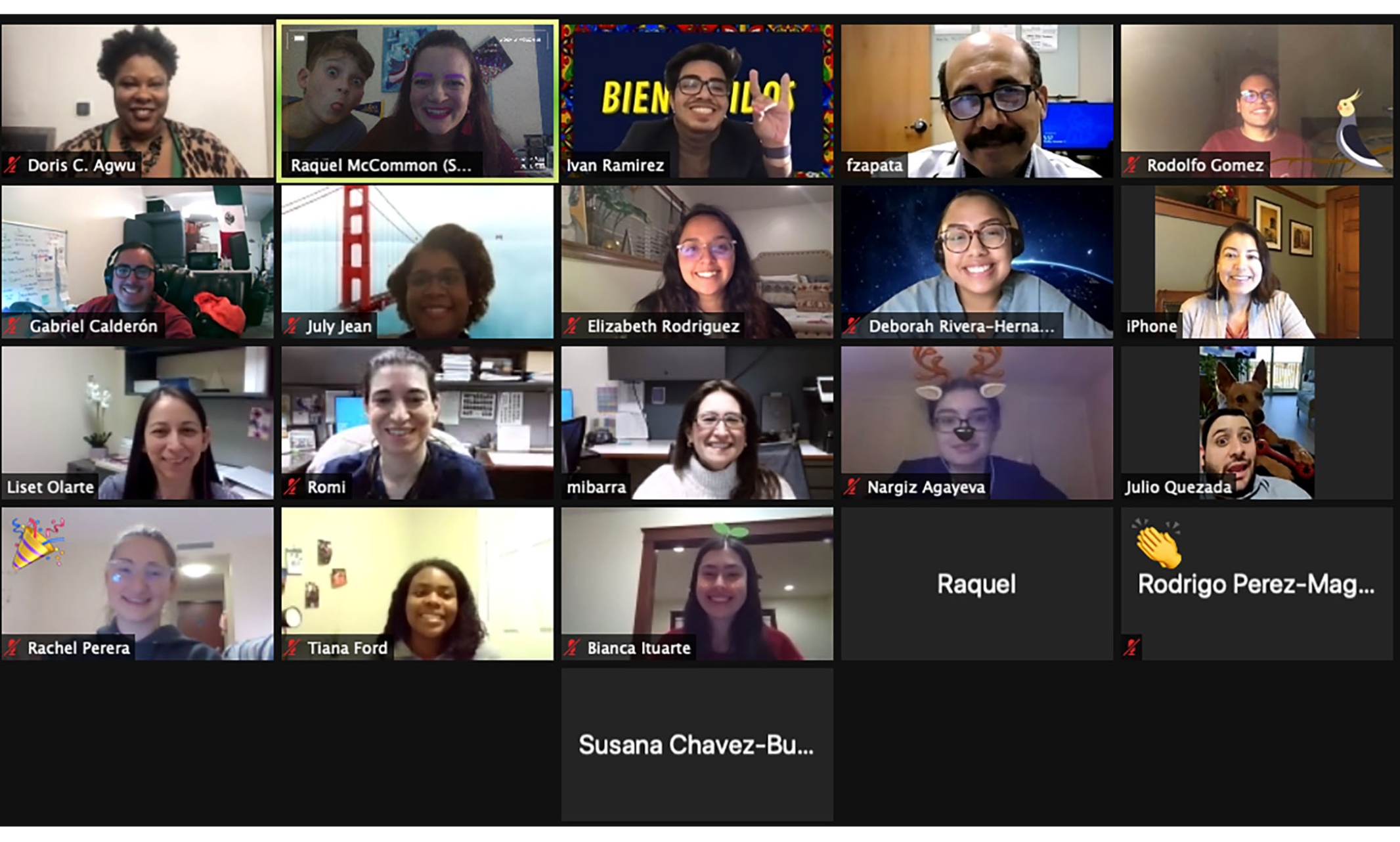
Latinos in Medicine provides mentoring, encouragement to help students succeed in medical school and as physicians
A new organization at the UMKC School of Medicine is designed to support and encourage Latinx students to help them succeed in medical school and as physicians.
Raquel McCommon, coordinator of strategic initiatives in the school’s Office of Diversity, Equity and Inclusion, said Latinx students are paired with physician mentors who can meet with and help the students through the challenges of life as an underrepresented minority in medical school and beyond.
Latinos in Medicine, established a year ago, gives the students the opportunity to meet and see successful Latinx physicians.
“That in itself is supportive, motivating and inspiring,” McCommon said. “It’s a way of making them feel a sense of belonging, connected, that they have people who are looking out for them, who understand where they’re coming from to help them have better success.”
McCommon said most of the students participating in the program are also involved in the school’s STAHR (Students Training in Academia, Health and Research) program. Supported by a grant from the United States Health Resources and Services Administration, that program also helps prepare students from disadvantaged backgrounds entering health care programs.
However, McCommon said, the STAHR program currently does not have any Hispanic mentors for students.
“What we were hearing from our Latinx students was ‘we need mentors and we need mentors that look like us,’” she said. “Part of the challenge is finding physicians who come from the same background and experiences as our Latinx students.”
As a result, School of Medicine Dean Mary Anne Jackson, M.D., reached out to Liset Olarte, M.D., a pediatrician at Children’s Mercy Kansas City, where Jackson is also on staff. Olarte leads the hospital’s Latinx Employee Resource Group, which includes several Hispanic physicians.
Olarte and her colleagues agreed to serve as physician mentors for the School of Medicine’s Latinos in Medicine program, which also partners with UMKC’s Avanzando program for Hispanic students campus wide.
“Not all of our students are going to go into pediatrics, but this is a stepping stone,” McCommon said. “Here is a physician that does look like you, who might speak the same language as you, that might have experienced a similar background or struggles as you.”
Ten students actively participate in the program, which is open to all Latinx students at the School of Medicine. In addition to one-on-one mentoring, the plan is for the Latinos in Medicine students to meet at least twice a year, including a welcoming program at the beginning of the school year.
McCommon said the broader goal is to offer more group meeting opportunities such as in-person study sessions where students and mentors can come together in an informal setting.
“Often students feel intimidated. There’s a level of hesitancy or reluctance,” McCommon said. “We want them to have what they need when they need it, not when it’s too late.”
Sep 17, 2021
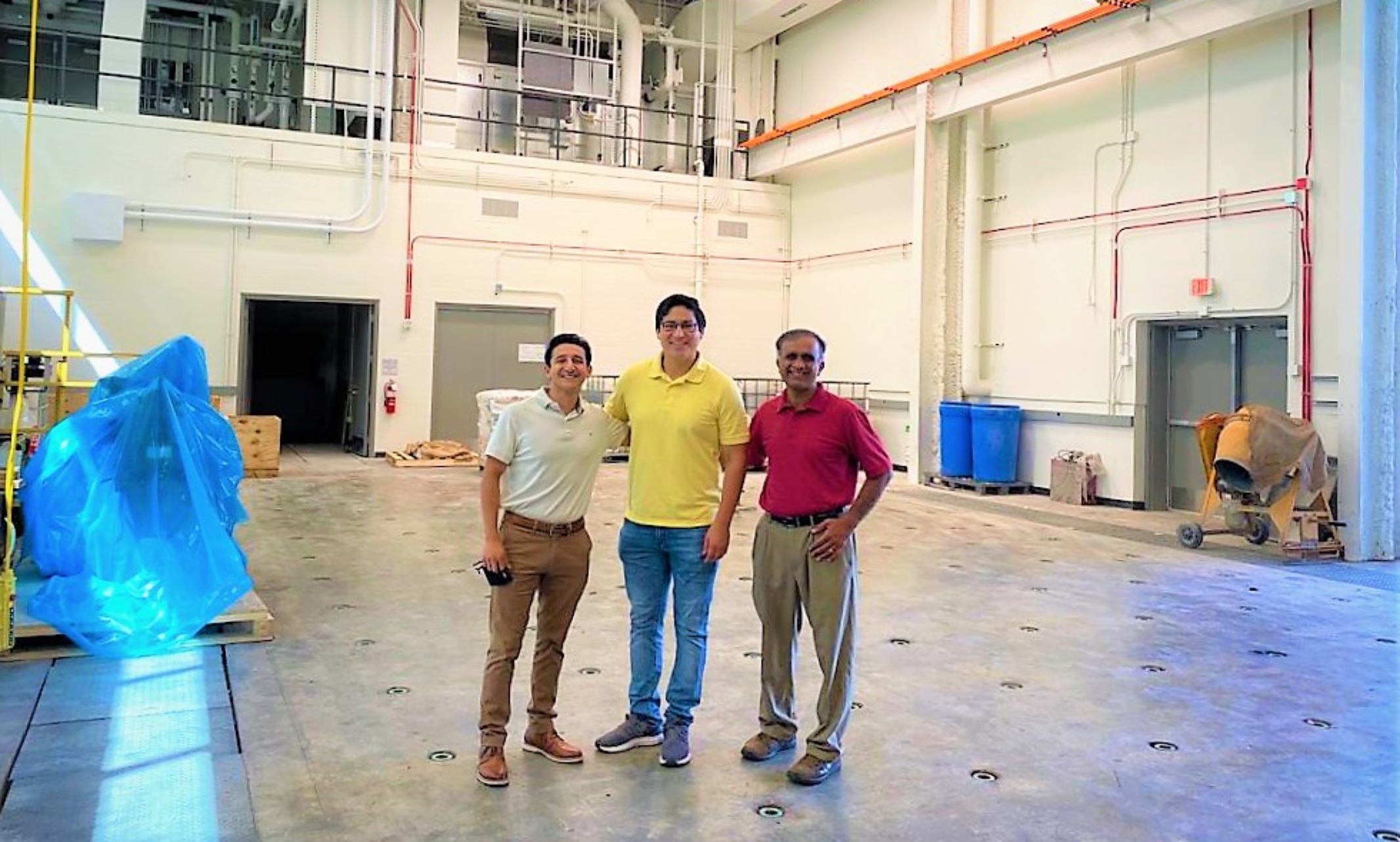
Competitors design, build and test a concrete beam
A team from the University of Missouri-Kansas City has won first place in a national-level student engineering design competition.
The Precast/Prestressed Concerte Institute announced on Monday that a UMKC team had placed first in their 2021 Big Beam Competition.
The competition, now in its 21st year, teaches college students important structural engineering skills in an applied learning environment. Teams of students with a faculty advisor design, build and test a 20-foot, precast, prestressed concrete beam.
Entries are judged on a variety of criteria, including the beam's performance in stress tests. The tests simulate real-life conditions structural building and infrastructure components must endure to ensure safety, as well as the quality of their analysis, reports and overview of their project.
The winning UMKC team included two students, Jose Luis Ramirez and Juan Carlos Plasencia Chinchay, and Ganesh Thiagarajan, Ph.D., professor of civil & mechanical engineering, faculty advisor for the team.
Plasencia Chinchay said the team was very happy with how things turned out and thanked Thiagarajan for encouraging them to participate.
"It is a great experience just to participate in this outstanding competition," Thiagarajan said. "I have coaxed and encouraged students to participate in it just for the learning experience alone, which itself adds so much to the overall prestressed concrete knowledge of students."
In addition to the first-place team, UMKC had a second team place in the top 10. Students Nick Shifflett, Logan Chamberlin, Christopher Bryan and Cristobal Hernandez placed seventh.
Sep 17, 2021
The initiative supports student writing in a multitude of ways
Starting graduate school is a huge step. Unlike most undergraduate programs, students will write proposals, dissertations, theses. How can one prepare for such a large shift in writing style?
UMKC graduate students can turn to the Graduate Writing Initiative. This grassroots effort was initially proposed by graduate students at the university who desired support with a very new style of writing. Demand for this resource became so high, the university has added a full-time academic staff position to the initiative. Marcus Meade, Ph.D., is the university’s first Graduate Writing Specialist.
Meade, originally from the Kansas City area, graduated with a degree in journalism from Northwest Missouri State University before going on to achieve a master’s and doctoral degree in English. He was previously on the faculty of the University of Virginia before joining the UMKC Graduate Writing Initiative.
“I was interested in the opportunity to work with students outside the classroom, setting outside writing support that didn't involve grades,” Meade said. “I found that was more holistic and more supportive. I get to focus on graduate writers, who I think are a particularly underserved population.”
Through the initiative, one-on-one counseling is available, as well as larger workshops. Students can connect with their peers for mentorship opportunities. The Writing Studio also offers blocks of time for students to have a quiet space to write, uninterrupted. This is a very important service for students who are juggling careers and families on top of their studies.
“All the research in supporting graduate students shows that the thing most students need is the ability to carve out time to write,” Meade said. “So, we try and create that for them. We can help them work that into their schedules. They can develop good writing habits, which includes protecting their own writing time.”
This somewhat unique service is available to all UMKC graduate students, across any discipline. Meade hopes students continue to utilize this resource so it can keep growing, supporting even more students through graduation.
“You’re not born with the ability to write a personal statement, or whatever you need to write,” Meade said. “We have a method for teaching them about that genre, understanding its conventions, practicing within it and tweaking them if they need to. We’re here to help them move into those new genres and find success in them.”
Learn more about the Graduate Writing Initiative and the services they provide. The UMKC Writing Studio, The School of Graduate Studies, UMKC Libraries and faculty, staff and graduate writers from departments across campus collaborate to provide these resources.
Sep 16, 2021
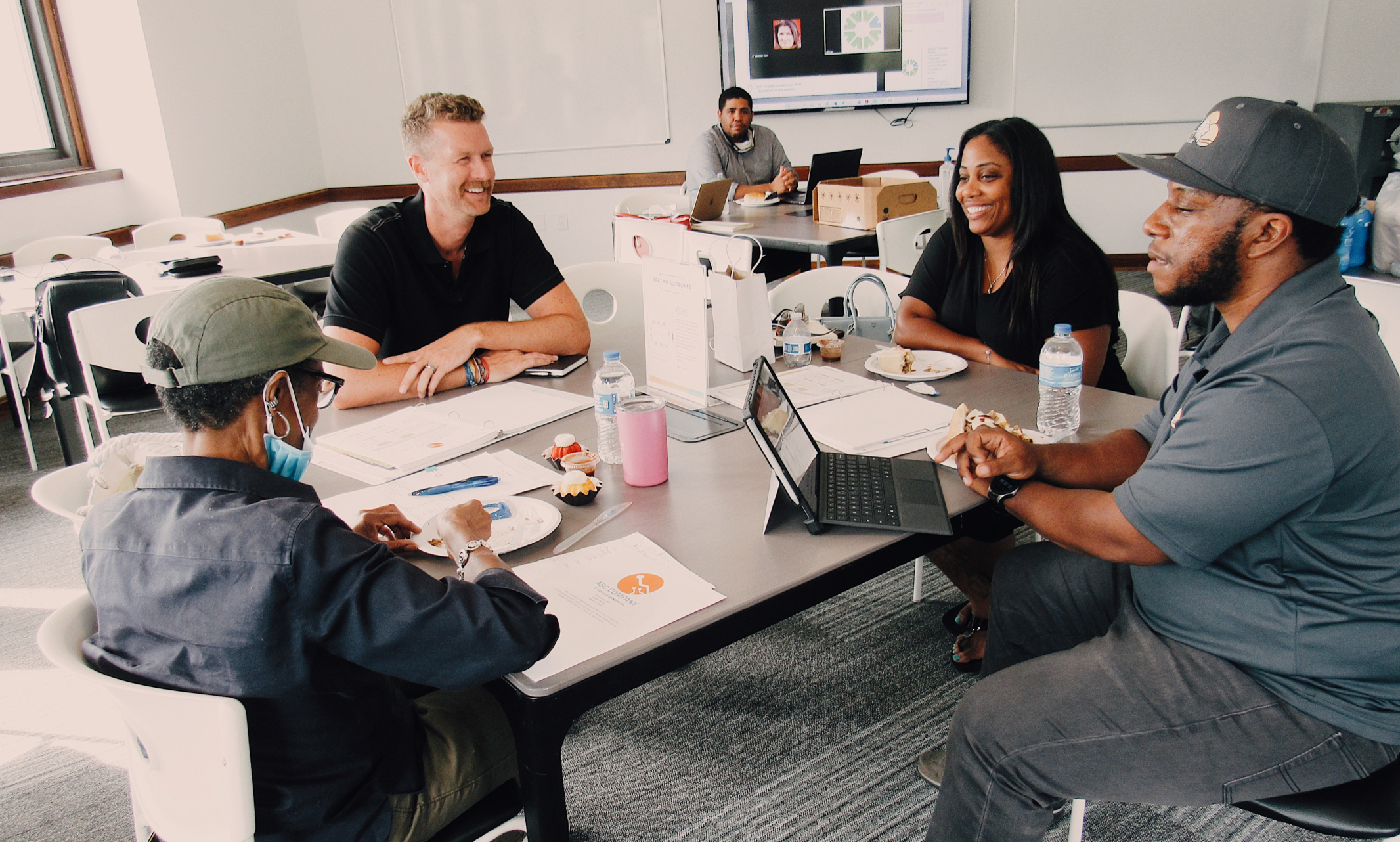
Students and urban small businesses both benefit from program
In most cases, the pricy services of a professional business consultant are beyond the reach of small businesses. A unique partnership between the UMKC Bloch School of Management and AltCap, however, is bringing valuable consulting services to local entrepreneurs from underrepresented communities.
MBA students in a new Bloch class formed teams that functioned like consulting firms and spent a semester working with small business clients of AltCap, a community development financial institution set up to increase the flow of capital to communities and businesses not adequately served by mainstream financial institutions.
The clients, participants of AltCap’s NeXt Stage KC business development program, received relevant, actionable recommendations for growth. The students, meanwhile, gained real world experience working as a consulting team. The Business Consulting class concept was developed by Bloch School Dean Brian Klaas. The class was taught by Tony Mendes, Managing Director of the Regnier Institute for Entrepreneurship and Innovation, and Ellen Junger, chief marketing officer at Helzberg Diamonds.
Student Dominika Luszcz was part of a team that worked with Parrish & Sons Construction, an excavating and grading contractor. The students developed a strategic plan for Parrish & Sons with recommendations in areas such as market differentiation, branding, website, social media and development of mission and vision statements.
“I was always very interested in consulting and always wanted to learn how the consulting business should be conducted,” Luszcz said. “By working firsthand with a real enterprise, I was able to experience and learn authentic business issues, questions that need to be asked to make the best possible decisions, and dive into a completely new industry.”
“As an international student from Poland, I found it fascinating to learn how business is conducted in the USA from every aspect including human resources, marketing, sales, research and development, supply chain management and finally strategic planning to increase revenue and expand sustainable growth.”
Parrish & Sons founder and CEO Fahteema Parrish said the student team delivered genuine value.
“They brought a fresh set of eyes and ideas on different ways we can improve on our media and marketing displays. They worked diligently and were persistent with getting any information they needed from me,” Parrish said. “I was very impressed with their final presentation.”
Zach Lieberman is one of the students who worked with Integrity Capital Management, a firm that works with both rental property owners and tenants to expand affordable rental housing options in the urban core.
“There were several different companies that were introduced to us at the beginning of the class. I gravitated towards my selected company because I saw the passion the owners had in their industry,” Lieberman said. “This organization is squarely focused on a small niche to rehab, restore and rent properties in Kansas City. There is an extreme shortage of livable houses in this area and this organization is attempting to turn this blighted and often forgotten area into an oasis of livable space.”
Terrell Jolly, founder of Integrity Capital Management, had high praise for the student consultants.
“We were blown away with the initial presentation. We were not expecting so much detail,” Jolly said. “Not only did the team present us with missed opportunities but also with solutions that would meet our needs and budget. They also created a timeline of implementations and steps needed to incorporate. I liked the versatility each of the students brought to the table. They worked well as a team that really helped with implementation strategies.”
Luszcz said the team approach was the best part of the experience.
“I met a wonderful group of students who became my partners during the class, but also friends who provided a lot of significant expertise to help me become more aware of the professional business environment. The whole class really felt like I was a part of a well-known and respected consulting company.”
Lieberman agreed.
“Nobody knows everything. A network of people can provide information and insight to help grow an organization. We took the owner’s passion and developed measurable next steps to help his organization grow.”
Sep 16, 2021
Comeback KC Ventures aims to turn pandemic-related ideas into healthy startups
KC Digital Drive and the UMKC Innovation Center are searching for at least 20 fellows for Comeback KC Ventures, with the goal of creating at least 10 new businesses, 30 new jobs and $5 million in follow-up funding. Read more.
Sep 16, 2021
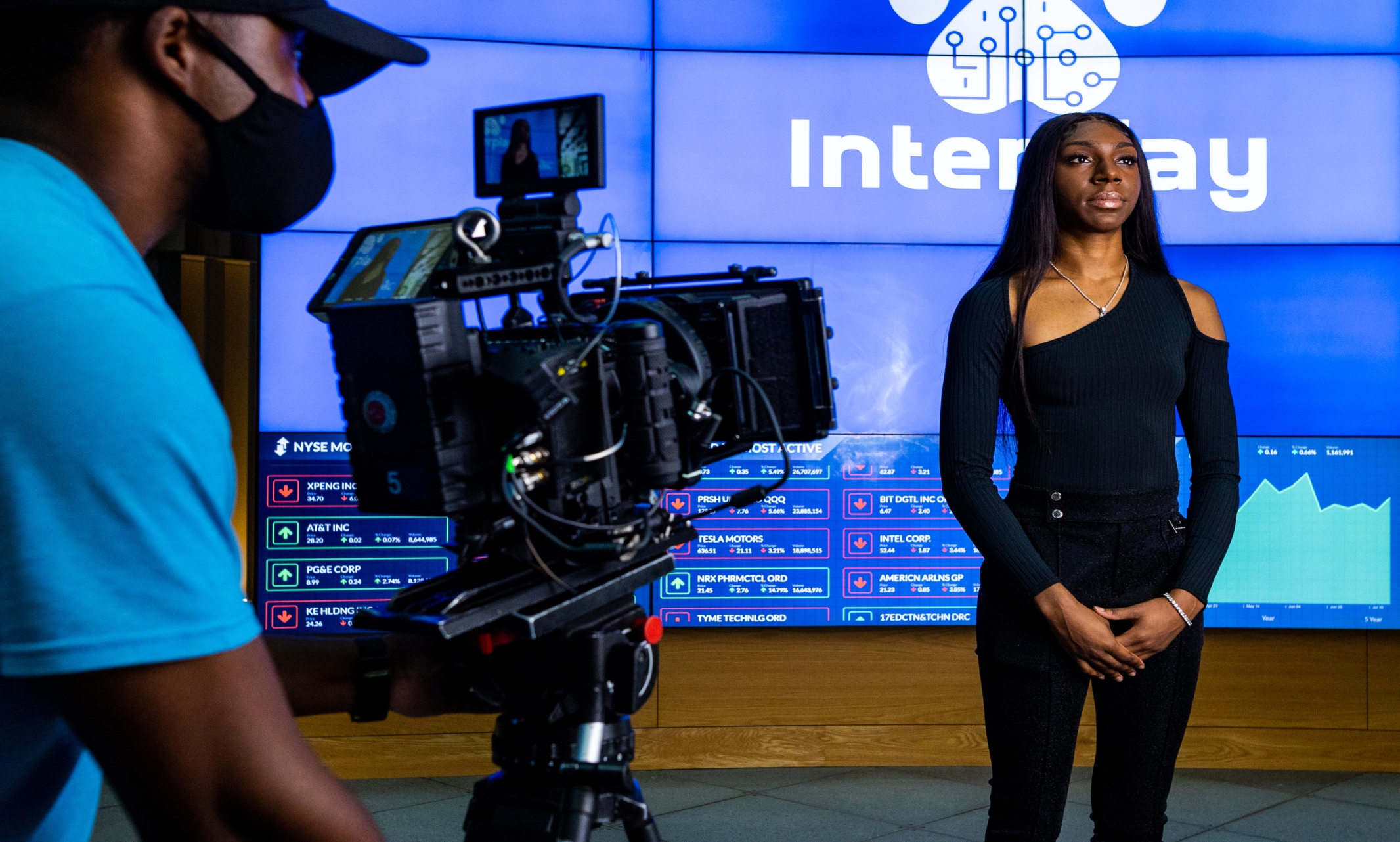
What ends up as a 60-second spot involved months of planning, entire day of shooting
The University of Missouri-Kansas City debuted a new commercial this month showcasing university people creating real change through excellence in learning, research and service.
The commercial is a part of the university's new branding and marketing campaign, with the theme RoosDo. The campaign is designed to showcase UMKC people, driven by inclusion, excellence and strong community connections, putting ambition into action.
It took months of planning to produce the 60-second commercial, according to Kim West, chief marketing strategist for the UMKC Divison of Strategic Marketing and Communications.
"We had many meetings and discussions to meticulously plan how best to showcase all the amazing things we do at UMKC," West said. "While much of this is really fun and exciting to think about, this is serious thought behind each and every shot you see."
Here's a look behind the scenes:
The day began with shooting at the Robert W. Plaster Free Enterprise and Research Center. Photo by Brandon Parigo.
Crews shot a number of students working on projects at the Plaster Center. Photo by Brandon Parigo.
The commercial was produced by Trozzolo Communications Group, based in Kansas City. Photo by Brandon Parigo.
Assistant Professor Mujahid Abdulrahim's flight simulator was also featured. Photo by Brandon Parigo.
It was then time to film a children's music class over at the Conservatory. Photo by Brandon Parigo.
Johnson and Interplay were among the final shots of the day. Photo by Brandon Parigo.
Crews wrapped for the day at the Henry W. Bloch School of Management. Photo by Brandon Parigo
Sep 15, 2021
How much exercise do we need to live longer?
“The very active group, people doing 10-plus hours of activity a week, lost about a third of the mortality benefits,” compared to people exercising for 2.6 to 4.5 hours a week, said Dr. James O’Keefe, a professor of medicine at the University of Missouri-Kansas City and director of preventive cardiology at the St. Luke’s Mid America Hear Institute, who was an author on the study. Read more. (subscription may be required)
Sep 15, 2021
How one KC entrepreneur is taking her venture concept to the next level
Jonaie Johnson is wired for success. A recent University of Missouri-Kansas City graduate, Johnson is a natural leader who thrives on challenges and puts her ambition into action. Read the full article.
Sep 15, 2021
UMKC professor uses his passion for flying to help pilots and passengers get home safely
Assistant Professor Mujahid Abdulrahim at the UMKC School of Computing and Engineering powers his research by using computers to model aircraft movement. Read more.
Sep 15, 2021
Berkley-Patton brings health care and healthy activity to underserved populations
Jannette Berkley-Patton, a UMKC professor and director of the University’s Health Equity Institute, is actively working to improve the health of African Americans in Kansas City using a unique strategy centered around building trust within communities and fully engaging them in the efforts. Read more.
Sep 15, 2021
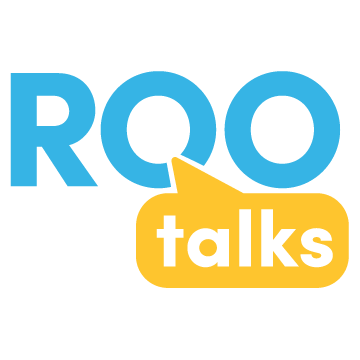
Alumni share their expertise on new series
The University of Missouri-Kansas City Alumni Association is launching a new town hall-style series called Roo Talks.
Roo Talks is a quarterly webinar speaker series presented by the UMKC Alumni Association. The talks will help alumni, and the UMKC community, become better informed on important topics and more aware of the great work our alumni are doing. The speaker series will be held free on Zoom as a webinar to allow alumni and individuals anywhere to attend.
“We are excited to launch this new speaker series and highlight our outstanding alumni,” said Kaitlin Woody, interim managing director of Alumni Relations. “The idea of Roo Talks came from wanting to highlight our outstanding alumni and all the different fields they are working in and have an event that was accessible to alumni where they are.”
Topics chosen will appeal to a national audience and will feature outstanding UMKC alumni. The first Roo Talk will focus on the impact of the pandemic on performing arts, particularly live theatre.
Roo Talks Series
First session, Sept. 27: When the Lights Went Out On Broadway. The free Zoom town hall will be at 4 p.m. Advance registration is required.
Theatres around the country went dark in March of 2020, but that did not deter UMKC Conservatory alumni from creating great performances. The first Roo Talks discussion with be with UMKC Theatre alumni. You will find out what they have been doing since the pandemic began and how things have changed for them and the industry.
Panelists include Charlie Corcoran (MFA, '01), Rocco Disanti (MFA, '08), James Yaegashi (MFA, '98), Donnie Keshawarz (MFA, '98) and Kate R. Mincer (MFA '08).
For more information on Roo Talks, contact Woody at zayk@umkc.edu.
Sep 14, 2021
Students in the Division of Theater at UMKC return to in-person productions
The show goes on for students in the Division of Theater at the University of Missouri-Kansas City, who are back performing in front of an audience starting this Thursday. Read more and watch the newscast.
Sep 14, 2021
UMKC gets $300K research grant to study racial barriers for Black and Hispanic entrepreneurs
A $300,000, three-year grant recently was given to the University of Missouri-Kansas City’s Center for Neighborhoods to support community-focused research analyzing barriers Black and Hispanic entrepreneurs face in Kansas City. Read more.
Sep 14, 2021
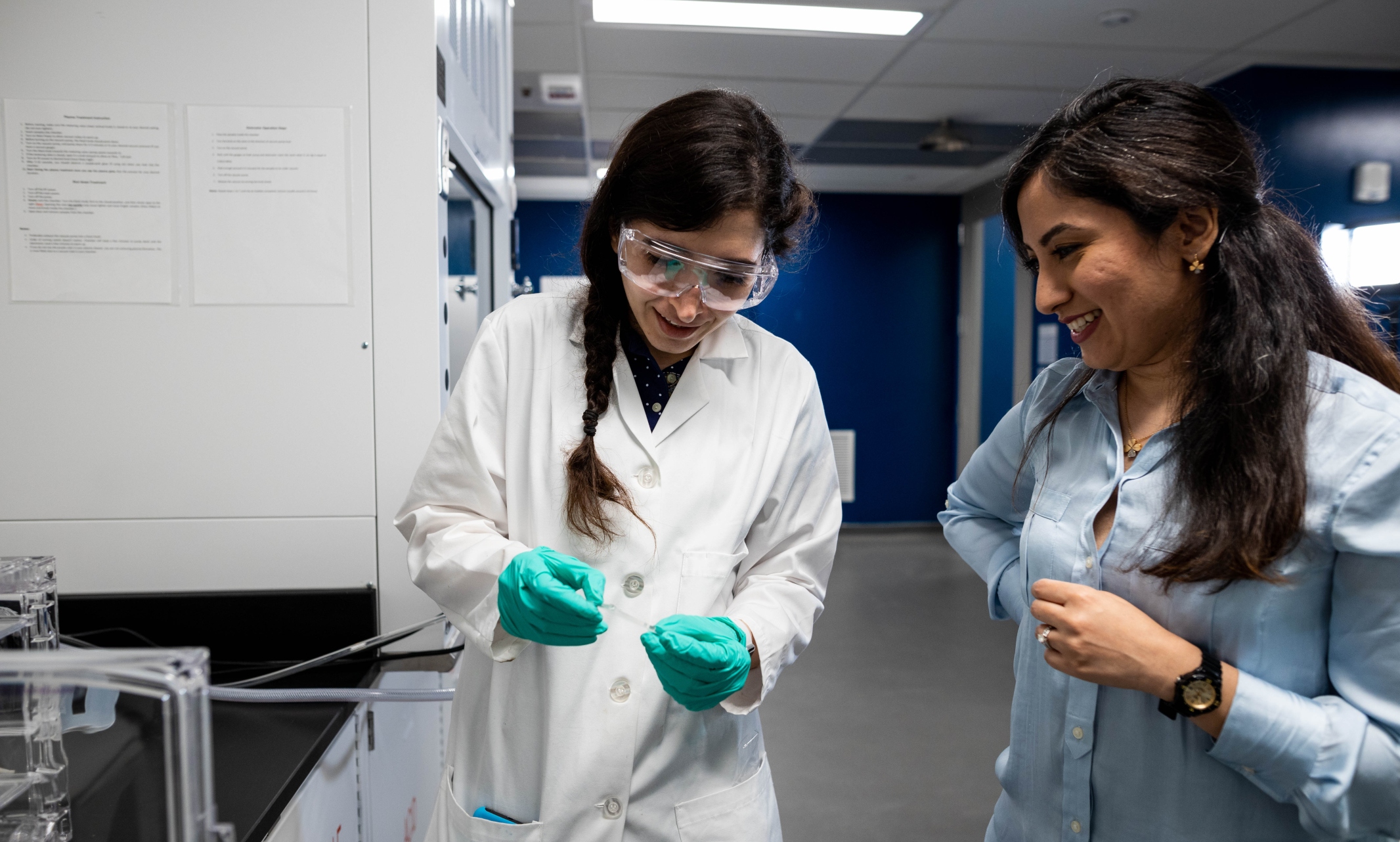
Alumni, faculty and students driving real community change to be showcased on TV, billboards, social media and more
The University of Missouri-Kansas City has launched a new branding and marketing campaign to demonstrate how UMKC people are powering our community by making discoveries, serving others and challenging the status quo.
The campaign theme is RoosDo, and the content is designed to showcase UMKC people creating real change by delivering excellence in learning, research and service. The campaign demonstrates that UMKC is the place where excellence meets action.
UMKC faculty, staff, students and alumni who are making things happen in the real world will be featured in a new TV commercial, on billboards in high traffic areas, print advertisements and digital advertising. The university will be employing both paid advertisements and boosted posts on Facebook, LinkedIn, Instagram and YouTube, including partnerships with diverse media outlets such as Kansas City Hispanic News, The Call, Dos Mundos and The Kansas City Globe.
TV commercial placements include spots during an upcoming Kansas City Chiefs game broadcast. The campaign will also involve a landing page on the UMKC website and branded water bottles, notebooks, pins and clothing. The goal of this campaign is to engage the community by sharing stories of people connected to the city’s largest higher education institution and promote what’s possible with an education from UMKC.
The campaign, launched in September, has been produced by Trozzolo Communications Group and the university’s Division of Strategic Marketing and Communications. Their work included engagement with the UMKC Trustees Brand Enhancement committee as well.
“Over the years, we have been very successful in raising awareness of the key role that UMKC plays in our community in vital areas such as workforce development, community engagement and bringing tens of millions of federal research dollars into our community,” said Anne Hartung Spenner, vice chancellor for Strategic Marketing and Communications. “With this campaign, we are taking our efforts to the next level by demonstrating what our RoosDo, the depth and breadth of our impact as Kansas City’s university.”
“When people see that game-changing innovation, medical breakthrough or social program that improves the community and say — I wonder who did that? We want them to realize there’s a good chance a UMKC Roo did, because RoosDo,” Spenner added.
With an alumni network of more than 135,000 graduates, spanning all 50 states and more than 60 countries, UMKC is educating future leaders and change makers. From local business owners to national government leaders, UMKC student stories will now be celebrated on a larger scale through this campaign.
Sep 13, 2021
Clutter…How and Why We Accumulate “Stuff”
Why do people never open up that bottle of wine for special occasions? Or that outfit hangs in the closet and never gets worn? We all have those items around the house we just can’t seem to part with. It’s known as clutter and Jacqueline Rifkin, assistant professor at the Henry W. Bloch School of Management, asked herself how this accumulation begins.
A psychologist explains why you buy things you don't need — and how to stop - Inverse
Psychological ‘Specialness Spirals’ Can Make Ordinary Items Feel Like Treasures – And May Explain How Clutter Accumulates - The Conversation
Clutter…How and Why We Accumulate “Stuff” - Missourinet
Sep 13, 2021
Kemper Museum uses contemporary art to connect two centuries of Missouri’s history
Paul Gutierrez, director of visitor experience and public programming at the Kansas City Museum, embraced the process. He worked to identify themes with Toya Like, associate professor and interim chair of Race, Ethnic and Gender Studies at the University of Missouri-Kansas City. Read more from KCUR.
Sep 13, 2021
Crowded Homes Drove People To Break Social Distancing Rules
The strain of living in crowded households may have been a large factor in breaking social distancing rules and putting health at risk during the pandemic, according to a study involving two University of Missouri-Kansas City researchers. Read the article from KCUR.
Sep 12, 2021
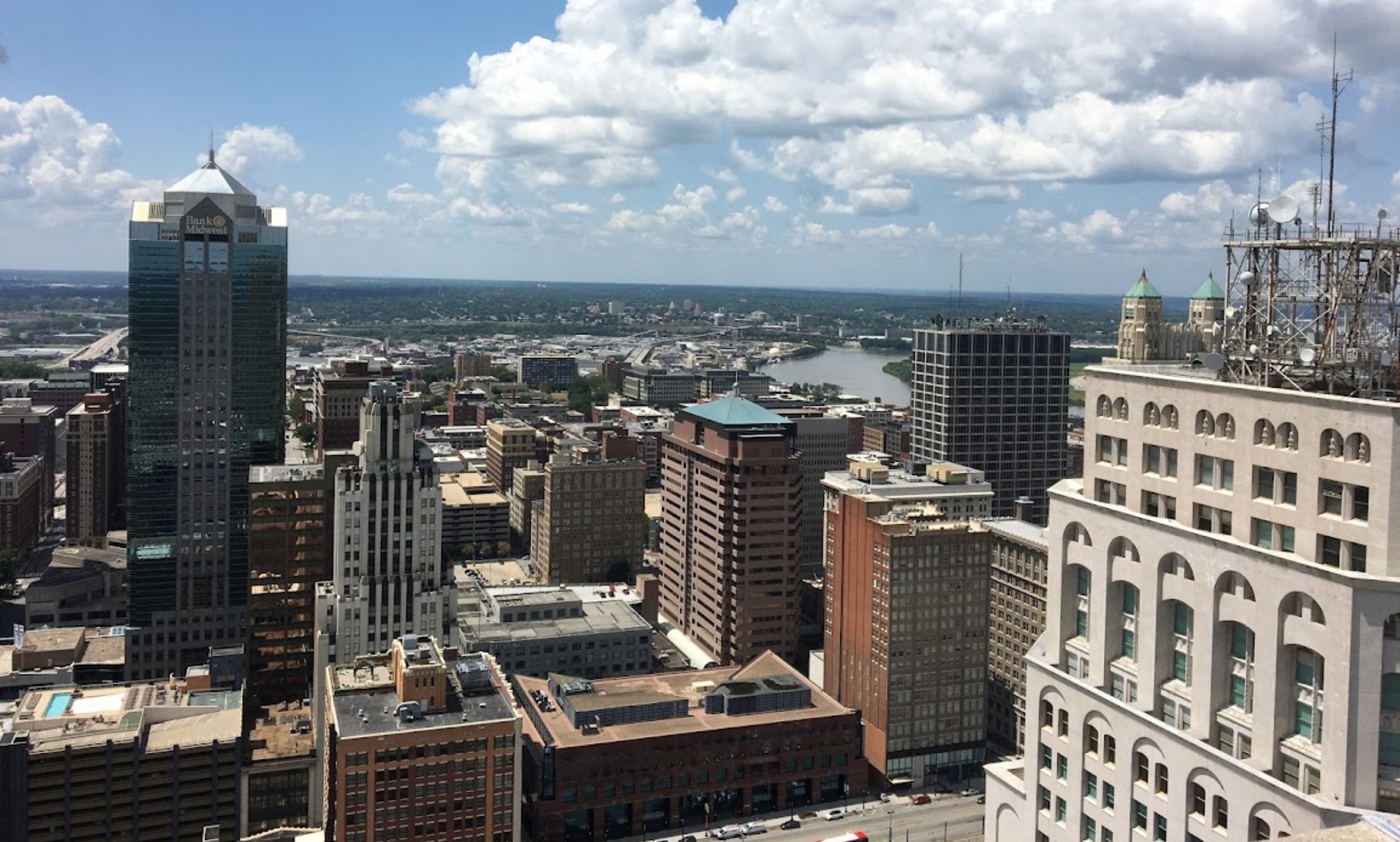
Ewing Marion Kauffman Foundation supports Center for Neighborhoods three-year research project
The Center for Neighborhoods at UMKC received a three-year, $300,000 grant from the Ewing Marion Kauffman Foundation to study the opportunities and challenges that Black and Hispanic entrepreneurs face starting new businesses in urban neighborhoods in Kansas City.
“Entrepreneurs and local businesses face a challenging environment for starting new or sustaining businesses in Black and Hispanic communities,” Dina Newman, director of the Center for Neighborhoods, says. “They encounter barriers such as lack of access to capital, inconsistent financing and pre-existing economic challenges related to redlining. We were honored to be invited by the Kauffman Foundation to apply for this funding.”
The Kauffman Foundation grant will support a community-focused research process that will examine the place-based challenges that entrepreneurs face due to a legacy of racially biased development restrictions. In addition, the Center will develop new knowledge about entrepreneurship opportunities for Black and Hispanic business owners.
“While we know that these entrepreneurs face race-based challenges, what is not as clear is how these challenges are compounded by the perception of their business locations by outside interests, especially financial institutions,” Jacob Wagner, associate professor and director of Urban Planning + Design says. “This study will allow us to research that impact.”
The Center will work with neighborhood and community networks to build relationships with Hispanic and Black entrepreneurs and develop a baseline analysis of the place-based challenges they face.
The second year of the grant will build on the first with a series of Asset Walks, an interactive and collaborative process in which the research team and local leaders will gather information from local entrepreneurs through informal meetings.
The results of the information from the Asset Walks combined with the baseline analysis will provide data for the center to understand which barriers to successful entrepreneurship are individualized, locational or systemic and which are a combination of these components.
The results of the study will not be purely academic, but a road map to success in rebuilding urban neighborhoods.
“We expect that this research will result in the development of new programs, workshops and training that will strengthen the ability of neighborhood organizations to be catalysts for escalating business development in the urban core,” Newman says.
“While we know that these entrepreneurs face race-based challenges, what is not as clear is how these challenges are compounded by the perception of their business locations by outside interests, especially financial institutions. This study will allow us to research that impact.” — Jacob Wagner
The Kauffman Foundation is a private, nonpartisan foundation based in Kansas City, Mo., that seeks to build inclusive prosperity through a prepared workforce and entrepreneur-focused economic development. The Foundation uses its $3 billion in assets to change conditions, address root causes and break down systemic barriers so that all people – regardless of race, gender or geography – have the opportunity to achieve economic stability, mobility and prosperity.
The Center for Neighborhoods is one of six recipients of funding from this community-engaged research request for proposal.
“We’re excited to support community engagement in the research process through this grant portfolio,” says Chhaya Kolavalli, senior program officer, Knowledge Creation & Research, Entrepreneurship. “These six projects aim to build equitable, collaborative, solution-driven initiatives between communities and researchers with the potential to advance inclusive prosperity through entrepreneurship.”
The Kauffman Foundation anticipates that findings from this project will provide practical insights and knowledge for communities, entrepreneur support organizations, ecosystem stakeholders, policymakers, researchers and philanthropy into how to develop equitable entrepreneurial ecosystems.
Sep 10, 2021
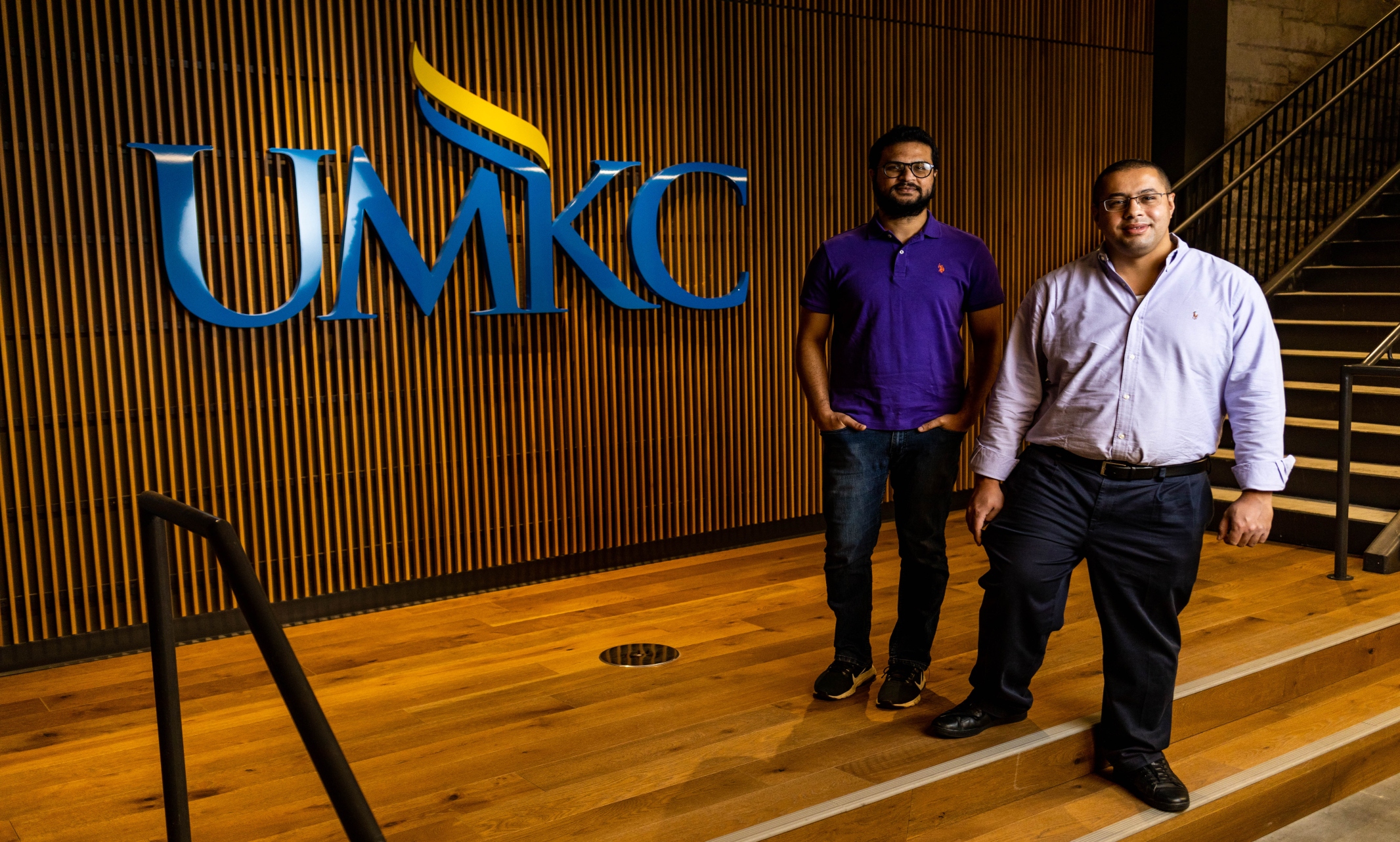
The research analyzes how moon dust particle shapes reflect light
A UMKC professor and student are among a team of researchers that have recently published a historic scientific paper measuring the exact shape of 25 dust participles collected from the Apollo 11 moon landing in 1969.
Research by Ahmed Hassan, Ph.D., associate professor of computing and engineer at UMKC, and Somen Baidya, Ph.D., will allow scientists to get one step closer to understanding why and how the moon reflects light.
"Our collaborates measured the 3D shapes of each sample," Hassan said. "We can look at those samples and calculate the electromagnetic properties like optical properties, or how they reflect light. By observing the light, we are able to get a better understanding of the optical characteristics of the moon as a whole."
The immediate practical application is satellite navigation, which can involve optical images of the moon. Longer-term, understanding properties of the dust will play a key role in creating a habitable living space for long-duration moon missions.
The research team also includes scientists from the National Institute of Standards and Technology, the U.S. Air Force Research Laboratory and the Space Science Institute.
The team's new research method both measures and computationally analyzes how the moon dust particle shapes scatter in the light.
The procedure involved stirring the particles into epoxy, which was then dropped over the outside of a tiny straw and mounted on the heads of pins, before being inserted into a special X-ray microscope capable of measuring the 3D shapes of each of the samples.
Hassan said the team sends him images of those samples to calculate the electromagnetic properties, such as how much they reflect light.
"We observe the light to be able to better understand the optical characteristics of the element," he said.
Hassan said the research has been a great way to help students relate to research they are working on.
"My main area of research is electromagnetic radiation. I love this field and I'm extremely passionate about it, but sometimes it's hard for students to relate to it because most electromagnetic radiation is invisible. You don't see microwaves or infrared rays reflected from things. This is a great way to correlate electromagnetics with a practical, real-life application that almost everyone is excited about."
Baidya, whose primary research for his Ph.D. (which he received this summer) involved studying human cells, said begin involved in the particle research helped expand his understanding of cell makeup.
"This research helped my previous studies about cell shapes," Baidya said. "It was a fantastic experience. I feel very lucky to have been able to work on this and contribute."
Research on the lunar particles is ongoing, and Hassan said the team has yet to scratch the surface of all the information they want to know. Now that the team has learned the shape of the particles, they are looking into developing ways to calculate the "mechanical and hydrodynamic properties of the dust."
"That means if this lunar sand gets into certain fluids, in the future when we maybe have settlements and astronauts there for a longer period of time, how can you filter them? How can you apply electric techniques to filter the lunar dust from the air?" Hassan said. "This is less than one percent of the particles that we have processed and it's only one set of characteristics that we have calculated. We're hoping to compute and study many, many more characteristics."
Scientific research aside, both Baidya and Hassan said simply being able to work with the moon particles has been "fantastic."
"All of us growing up have those dreams of becoming an astronaut or doing something space-related," Hassan said. "So seeing those samples, it's hard to describe the feeling of seeing those samples and knowing they are from outer space. It's really, really interesting."
Sep 10, 2021
Local media interview Stephanee Evers
UMKC School of Medicine alumna Stephanee Evers worked on a FEMA urban search and rescue team at ground zero. She now works as an emergency medicine physician at Olathe Health. Read the full story and watch the newscast. Evers was also mentioned in these news stories:
Olathe ER doctor reflects on 9/11 recovery efforts at ground zero - Yahoo News
9/11 first responder from Olathe looks back before the 20th anniversary this Saturday - KMBC
Sep 09, 2021
The Kansas City Star reports on Missouri gun culture
“We might think that a kid with a gun is irrational behavior, but in a lot of ways it is actually rational behavior,” said Ken Novak, a professor of criminal justice and criminology at the University of Missouri-Kansas City. In a culture where “there are so many guns out there, a kid knows they are at risk of becoming a victim of gun violence, so they carry a gun too.” And so it goes. Read the full story.
The Kansas City Star article was picked up by these news outlets:
MSN
Yahoo News
Sep 08, 2021
Research ranges from flight simulation to the breakdown of plastics
Between January 2020 and June 2021, faculty from the School of Computing and Engineering have been awarded $7,549,732 in research funding.
Megan Hart, Ph.D., assistant professor of Civil and Mechanical Engineering, was awarded $262,821 from the Department of Defense for work on unique ways to break down polyfluoroalkyl substances, which are substances utilized for their water and stain repellant properties.
"From non-stick coatings, like inside of microwave popcorn bags, to your rain repellent gear and beyond, polyfluoroalkyl substances touch almost every aspect of our lives from food, to water, to air," Hart said.
Unlike other hazardous materials, most polyfluoroalkyl substances do not break down using normal water and wastewater treatment techniques, which means that as the substances later break down in soil or water, they can cause harm to humans and animals.
"Our research seeks to invent new and unique methods for completely destroying polyfluoroalkyl substances in the water, as well as investigate how they transform over time in soil," Hart said.
Assistant Professor Mujahid Abdulrahim, Ph.D., was awarded a combined total of $204,995 over the last year for research on virtually modeling aircraft movement by computer.
His goal is to take auto-pilot functionality to new heights without taking flying away from pilots. He wants to make their safety net stronger through developing a computer algorithm that would interpret the actual performance of an aircraft in flight compared to predetermined models on how it should be performing.
"I don't want to replace pilots with a computers," Abdulrahim said. "I love the idea of preserving everything that makes airplanes fun to fly, but I also love the idea of coming home to my children after every time I take to the air."
Below is a complete list of research funding awarded over the last year and a half.
Civil and Mechanical Engineering:
$396,899 to John Kevern for KC Urban Renewal Engineering fellows.
$600,000 to John Kevern for supplement KC Urban Renewal Engineering fellows
$24,998 to Amirfarhang Mehdizadeh for Indian Creek Flood assessment.
$13,500 to Antonios Stylianou for the development of computational tools for pre-op planning of periacetabular osteotomies.
$188,000 to Travis Fields for graduate fellowships for students engaged in NASA-relevant disciplines.
$57,128 to Travis Fields for material processing and automation (partnership with Institute for Material Processing).
$33,000 to ZhiQiang Chen for guidelines for response planning, assessment and rapid restoration of service of bridges after extreme events.
$110,000 to Zahra Niroobakhsh for tuning the viscoelastic properties of enhanced oil recovery relevant bijels.
$60,000 to John Kevern for evaluating the impact of anti-icing solutions on concrete durability.
$40,000 to John Kevern for evaluation of non-traditional sidewalk options for reduced long-term cost and improved public accessibility.
$262,821 to Megan Hart for validation of UV/TiO2 activated alkaline media for destruction of PFAS in concentrated liquid waste systems.
$129,995 to Mujahid Abdulrahim for modeling and simulation architecture to improve research.
$60,000 to Mujahid Abdulrahim for FLEXI-Fly: Field-Reconfigurable, Mission-Adaptive eVTOL.
$22,500 to Zahra Niroobakshsh and Kun Cheng for 3D printing of next-generation therapeutic microneedles using rapid self-association of surface-active peptide drugs.
$30,000 to Ceki Halmen for justifying corrosion durability of reinforced concrete, comparable critical chloride threshold for various reinforcement types.
$40,500 to Ceki Halem for the development of instructor resources for the Contractor's Guide to Quality Concrete Construction (fourth edition).
$19,900 to Deb Chatterjee for signal and radiating systems design and modeling for app.
$15,000 to Mujahid Abdulrahim for UAV-UGV cargo drop.
$57,500 to Ceki Halmen for standard critical chloride threshold test variability due to material sources.
$129,835 to Thiagarajan Ganesh for load and resistance factor rating methodology recommendations for Missouri bridges.
Computer Science and Electrical Engineering:
$305,800 to Yugyung Lee for CUE Ethics: Experiential Learning: Bridging Digital Divides in Undergraduate Education of Data Science.
$44,200 to Yugyung Lee for supplement: CUE Ethics: Experiential Learning: Bridging Digital Divides in Undergraduate Education of Data Science.
$20,000 to Yugyung Lee for supplement #2: CUE Ethics: Experiential Learning: Bridging Digital Divides in Undergraduate Education of Data Science.
$18,000 to Baek-Young Choi for Technology Education for Women in Transition: Broadening Participation Through Innovations.
$301,413 to Faisal Khan for estimating remaining life and availability of power semiconductor devices using sympathetic string phenomena, dynamic safe operating area theory and ultrasound resonators.
$50,000 to Zhu Li for membership renewal for NSF Center for Big Learning.
$150,000 to Yugyung Lee for Smart and Connected Communities Planning Grant: Early Community Intervention for Neighborhood Revitalization Using Artificial Intelligence and Emerging Technologies.
$73,000 to Dianxiang Xu for modeling clinical notes with deep learning transformers.
$42,763 to Yugyung Lee and Brent Never for early community intervention for neighborhood revitalization using AI and emerging technologies.
$22,500 to Yugyung Lee, Brent Never and Wang Ye for Communities in Action: Sustainable Science in Cyberinfrastructure.
$90,000 to Dianxiang Xu for EAGER: SaTC-EDU: Exploring Visualized and Explainable AI to Improve Students' Learning Experience in Digital Forensics Education at MSCI and HBCUs.
$15,000 to Yugyung Lee for gamifying cybersecurity to eliminate alert fatigue.
$96,058 to Dianxiang Xu for GenCyber Summer Camps at UMKC.
$50,000 to Zhu Li for membership fee for NSF Center for Big Learning.
$25,000 to Yugyung Lee for membership to NSF Center for Big Learning.
$25,000 to Zhu Li for membership fee for NSF Center for Big Learning.
$88,490 to Yugyung Lee for Our Healthy KC Eastside: A community-wide COVID-19 vaccination and health services project to address health inequities.
$50,000 to Zhu Li for membership fee for NSF Center for Big Learning.
Sep 07, 2021
Will a pilot program in the infrastructure bill help reshape Kansas City’s inner-loop?
Jacob Wagner, the director of urban studies at the University of Missouri-Kansas City, said that while the northern and southern parts of the downtown loop merit attention, they are not the roads that left the most damage. Read more.
Sep 07, 2021
Can private club in Blue Springs use masking exemption?
UMKC Law Professor Allen Rostron said loopholes like this one tend not to stand up in court. If this scenario ends up in front of a judge, he said a major factor to the case will be proving Rae’s is in fact a private club. Read more.
Sep 07, 2021
UMKC economics professor says work-life balance contributes to lack of labor
UMKC associate professor Bill Black disputes the claim that enhanced unemployment benefits are to blame for a worker shortage. Read more.
Sep 06, 2021
KCUR: Meet Carl Allen
After Bobby Watson's long tenure, Carl Allen is the newly-appointed William D. and Mary Grant Endowed Professor of Jazz Studies at the University of Missouri-Kansas City. Read more.
Sep 03, 2021
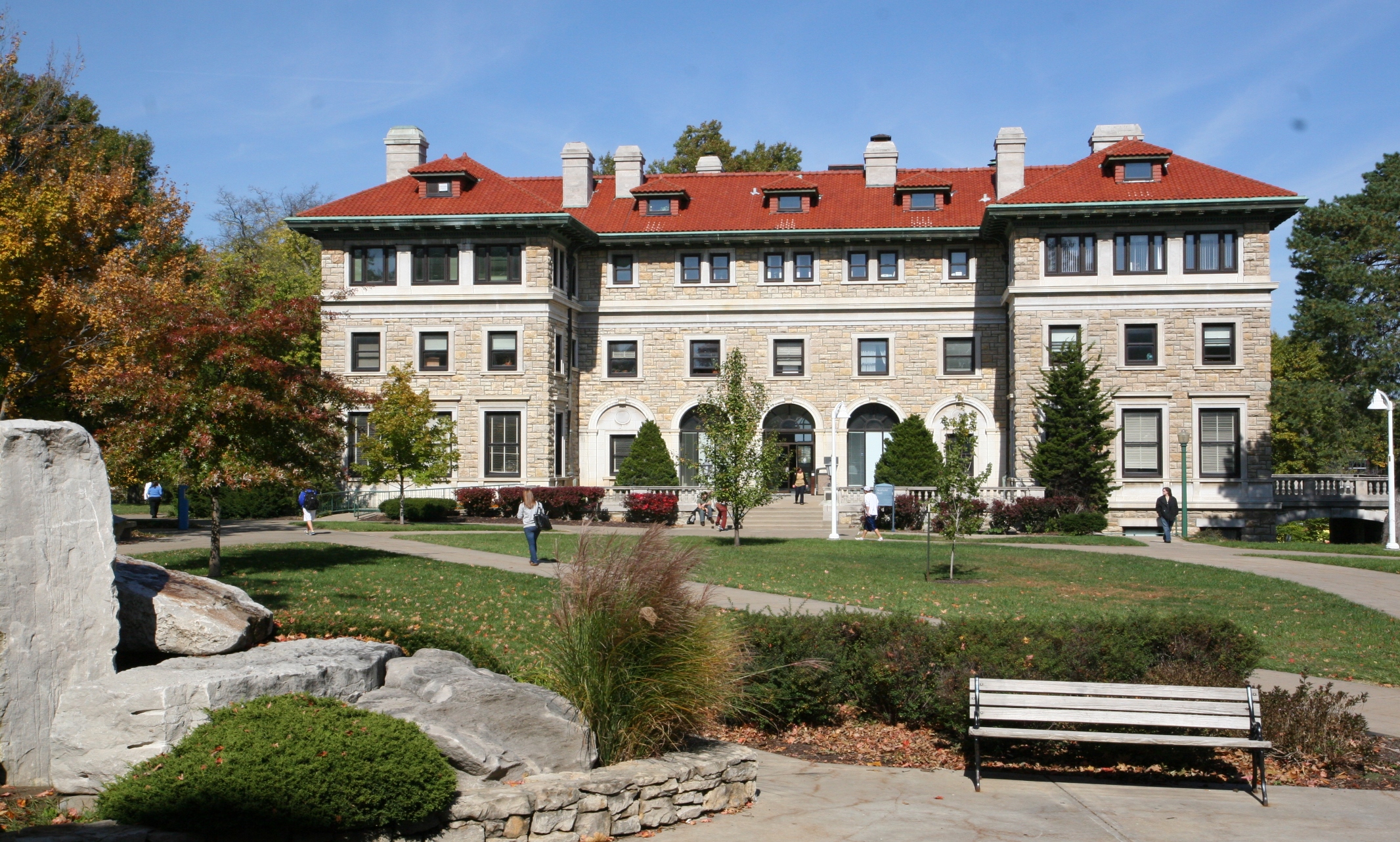
Bachelor of Applied Science helps those with Associates Degrees advance their skills and job prospects
The University of Missouri-Kansas City will offer a new degree — Bachelor of Applied Science — starting fall 2022.
The University of Missouri System Board of Curators approved the proposed degree unanimously on Thursday.
The Bachelor of Applied Science degree is designed for students who have completed an Associate in Applied Science degree. Beth Vonnahme, Ph.D., associate dean of the College of Arts and Science, said those associate degree credits do not easily transfer to many four-year degree programs, which means students wishing to return to higher education for career advancement must often start near the beginning of a four-year program.
"The new degree program allows students to use up to 60 hours of their associate degree credits toward the new bachelor's degree, enabling them to enter the workforce with a bachelor's degree in two years. This saves them valuable time and financial resources," Vonnahme said.
The new degree curriculum will combine core skills employers are looking for in future employees, such as critical thinking, communications, ethics, teamwork and complex problem-solving skills, with expertise in high-demand fields including business, organizational leadership, healthcare management, data analytics, digital media and digital humanities.
"This degree program will grow the pool of potential applicants with the technical experience and key competencies employers need for their workforce," Vonnahme said. "This innovative degree program presents a major opportunity to recruit new students, provides a high-quality educational experience to students who are currently underserved and equips the region's workforce with in-demand education and skills."
Sep 02, 2021
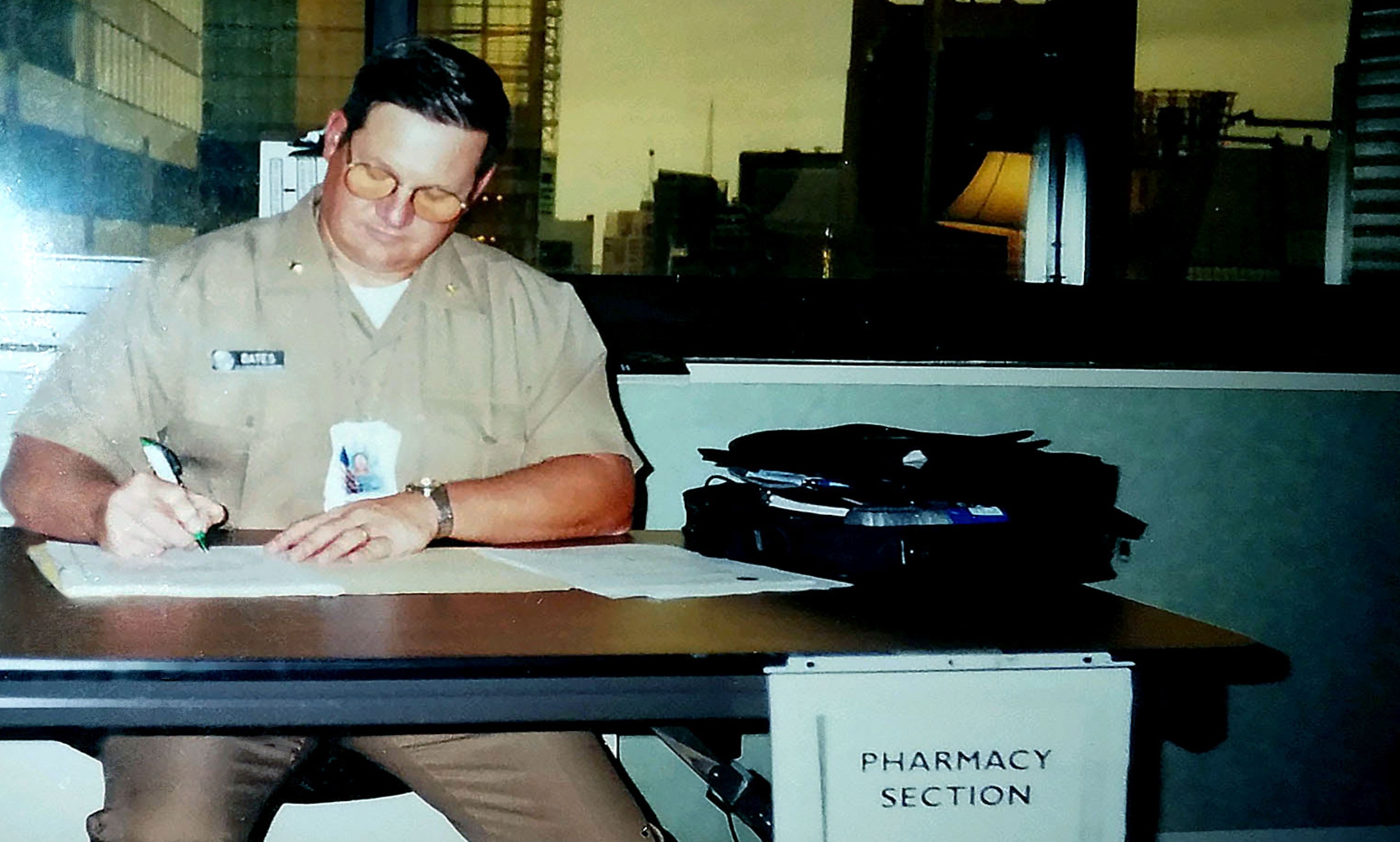
UMKC grad served as lead pharmacist, caring for responders at Ground Zero
Twenty years later, the horrifying events of 9/11 are etched in David Bates’ memory.
Bates (B.S./R.Ph. ’93) recently thumbed through a large scrapbook on a desk at his home in Gallup, New Mexico. As the UMKC School of Pharmacy alumnus reminisced about the role he played as lead pharmacist for the emergency response teams at Ground Zero during the early days of the recovery effort, he stopped and pulled out a sheet of paper.
“Look at this,” Bates said. “I still have a copy of my deployment orders.”
Then a member of the United States Public Health Service in Tsaile, Arizona, Bates was back at UMKC on a recruiting trip for the service when news broke that terrorists had struck in New York City.
“By the time I got to campus, things were getting strange,” he said.
Finally able to connect by phone with his superiors at the emergency response headquarters, Bates was told to immediately return home to Arizona and await further orders. A week later, when grounded flights were finally restored in the U.S., Bates received the order to report to New York. His assignment would be to requisition supplies and establish a pharmacy in support of the five treatment sites set up for response teams near Ground Zero.
“When I got there the pile was still carrying temperatures of 1,200 degrees in places and was still burning big time. All that stuff was still being released in the air. You didn’t know what you were breathing. The ash in the air was everywhere. When you looked and saw the debris fields, they were seven stories high. That was very hard for me." — David Bates
Two years earlier, as a member of a disaster response team based in Albuquerque, New Mexico, Bates had deployed to Fort Dix Army Base in New Jersey as part of Operation Provide Refuge. During that tour, he provided pharmaceutical care for refugees entering the United States from war-torn Kosovo.
“That was my big break because I was working with emergency response people,” Bates said.
The experience paved the way for his call to New York in response to 9/11. A military veteran, Bates served as a medic and pharmacy technician with the U.S. Air Force before deciding at age 40 to return to school at UMKC. After earning his pharmacy degree, he joined the U.S. Public Service Corps and fulfilled his desire to work with emergency disaster teams. Nothing he had experienced before compared to what lay before him when he arrived at Ground Zero.
Bates looked at the devastation from the 9/11 attack on the Twin Towers of the World Trade Center in New York City.
“When I got there the pile was still carrying temperatures of 1,200 degrees in places and was still burning big time,” he said. “All that stuff was still being released in the air. You didn’t know what you were breathing. The ash in the air was everywhere. When you looked and saw the debris fields, they were seven stories high. That was very hard for me.”
Bates established sick call units for responders who had forgotten or run out of their medications for chronic ailments. That was in addition to locating and requisitioning medical supplies to establish a pharmacy that could support the on-site medical clinics, which were seeing 400 to 500 volunteers, military and disaster responders a day.
Many of those, Bates said, were soon becoming ill with respiratory issues because of the large amounts of toxic dust in the air. As of June 2021, the World Trade Center Health Program reported more than 3,500 deaths of responders attributed to a variety of illnesses associated with the aftermath of the 9/11 attack.
Things became so intense at one point that the chief of U.S. Army medical corps came to Bates one morning with a special request. Cyanide gas was escaping into the air and he needed cyanide antidote kits, stat. Bates quickly called a pharmaceutical provider, AmerisourceBergan, and explained his problem. That afternoon, Bates had the kits in hand.
“When the chief medical officer came back and I gave him the kits his response was, ‘I don’t even have the protocols written up for those yet.’ I said, ‘Well you’ve got ’em when you need ’em,’” Bates said. “That made me feel good because it surprised everybody.”
What particularly caught Bates’ attention during his time in New York was the enormous outpouring of support from the American people who wanted to help in some way.
“There was a tremendous response from Americans,” Bates said. “They sent us all kinds of stuff from their (medicine cabinets). Individuals, companies were all sending things they had and we had to go through all of that and see what was good, what was expired, what hadn’t expired, and see whether we could use it.”
In addition, many New York hospitals and other providers had immediately set up small clinics along the city streets. When the federal government took over the recovery efforts, the clinics were abandoned and most everything, including medical supplies, was left behind. It was Bates’ job to confiscate and sort through all of those medications, many of them controlled substances.
“During chaos, things happen,” he said. “It was total chaos at that point. We were just trying to bring a little organization back to the world.”
Nearly 10 days after arriving at Ground Zero, Bates had set up and organized a pharmacy on site from scratch for the next wave of responders. Bates then went home to finish up some year-end paperwork before taking a well-deserved vacation to a Florida beach with his wife and family.
Now retired from the Public Health Service, Bates is a contract pharmacist working with the Winslow Indian Health Center providing care for the Navajo Indian Nation. His career has sent him on 19 deployments to disaster sites across the country.
He says watching the recent U.S. evacuation of Afghanistan “works on you a little bit because you know what started this whole Afghan response from the military action was right where we were on 9/11.”
And it’s those events surrounding 9/11 that still stand out as a defining moment in his life.
“It helped me be more caring about people who are really in need,” he said. “I got involved in emergency response and kept taking it to a deeper and deeper level. I saw it as a way of helping people who were in desperate need of help. And these people were.”
Sep 01, 2021
Flatland interviews UMKC professor
Gary O’Bannon, HR management professor at UMKC, gave insight on the new job market in the face of a pandemic. Read more.
Sep 01, 2021
